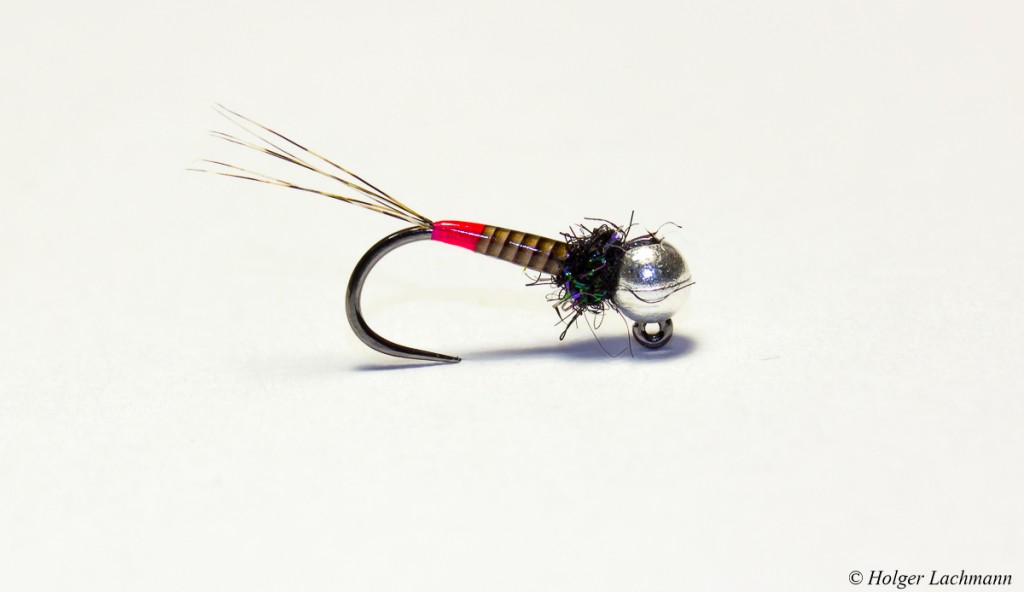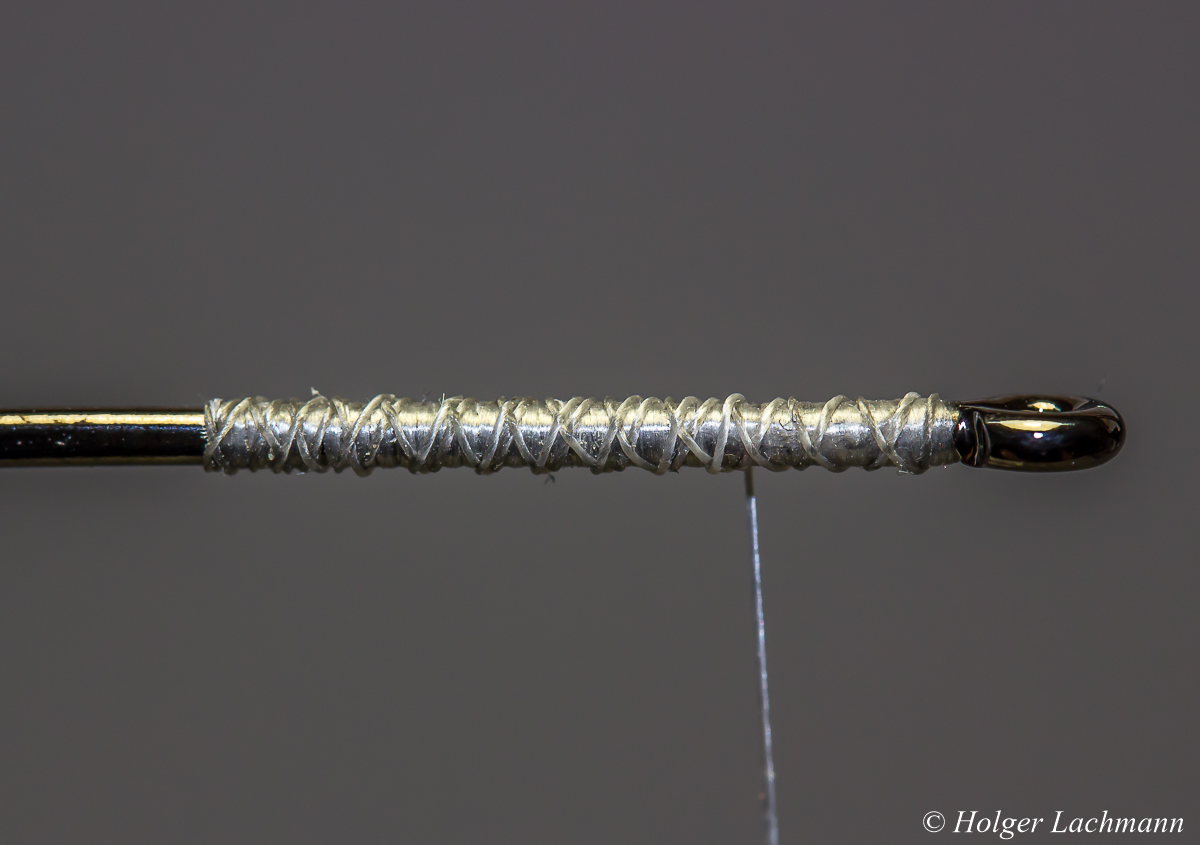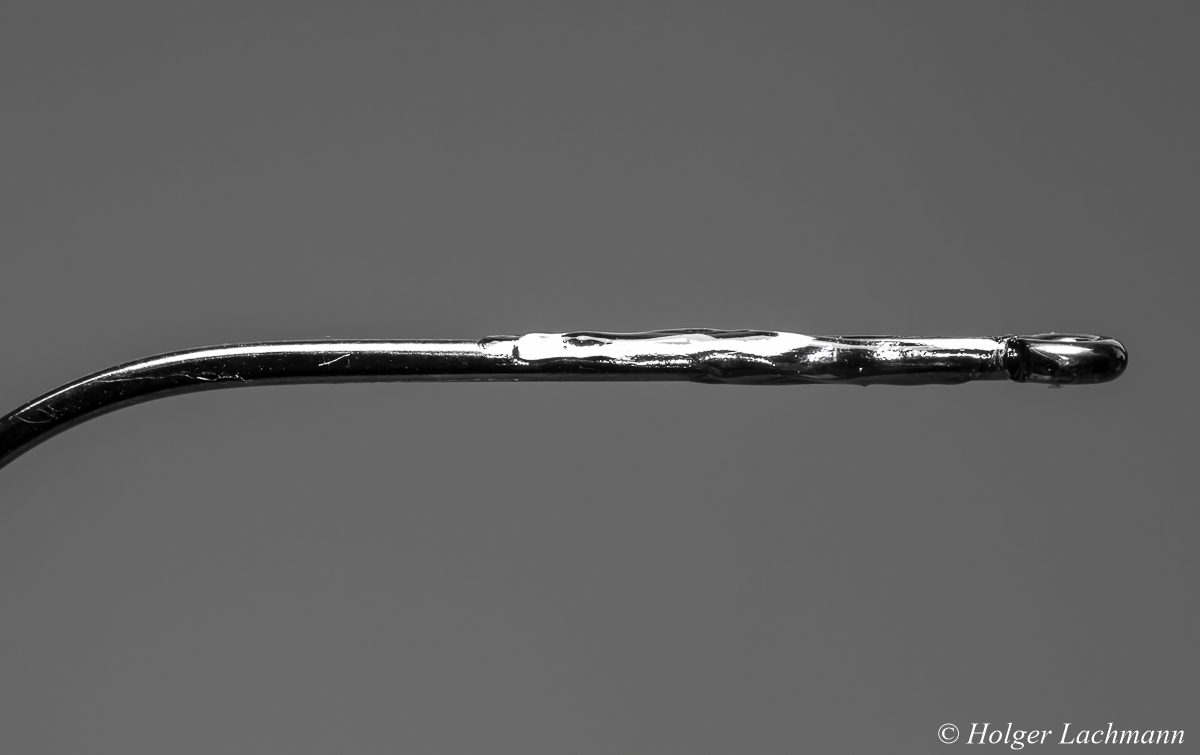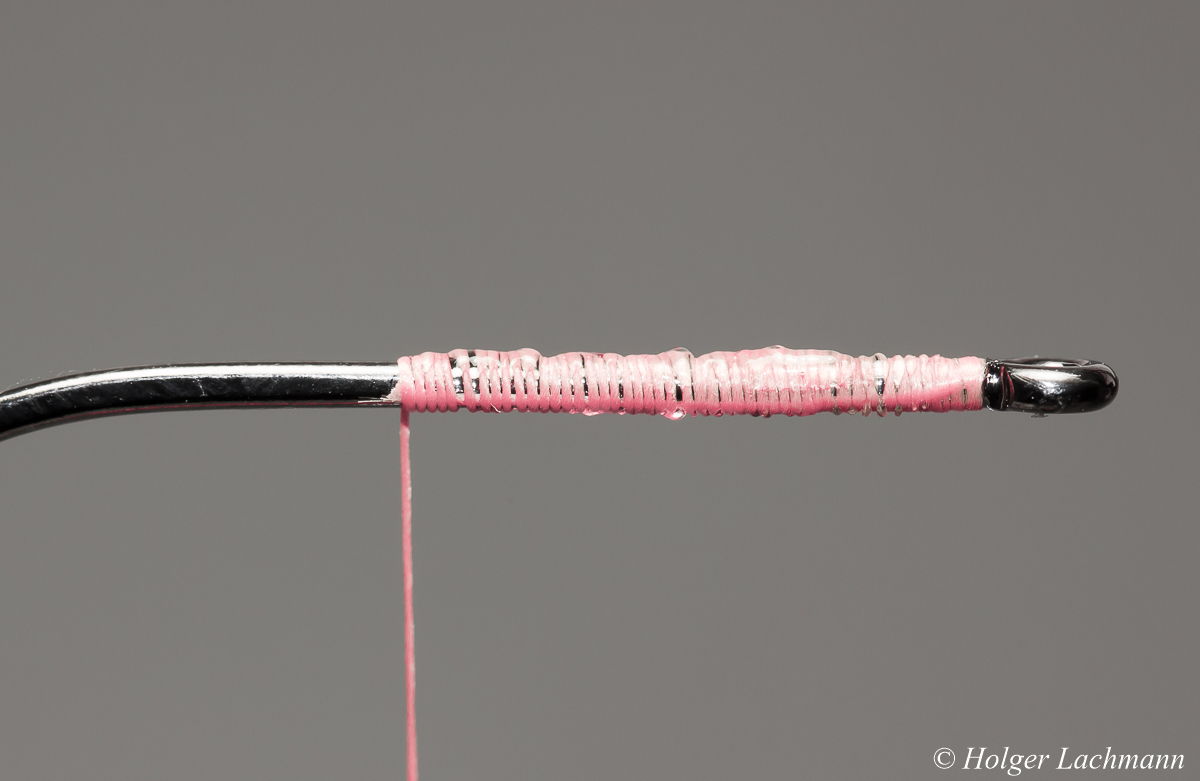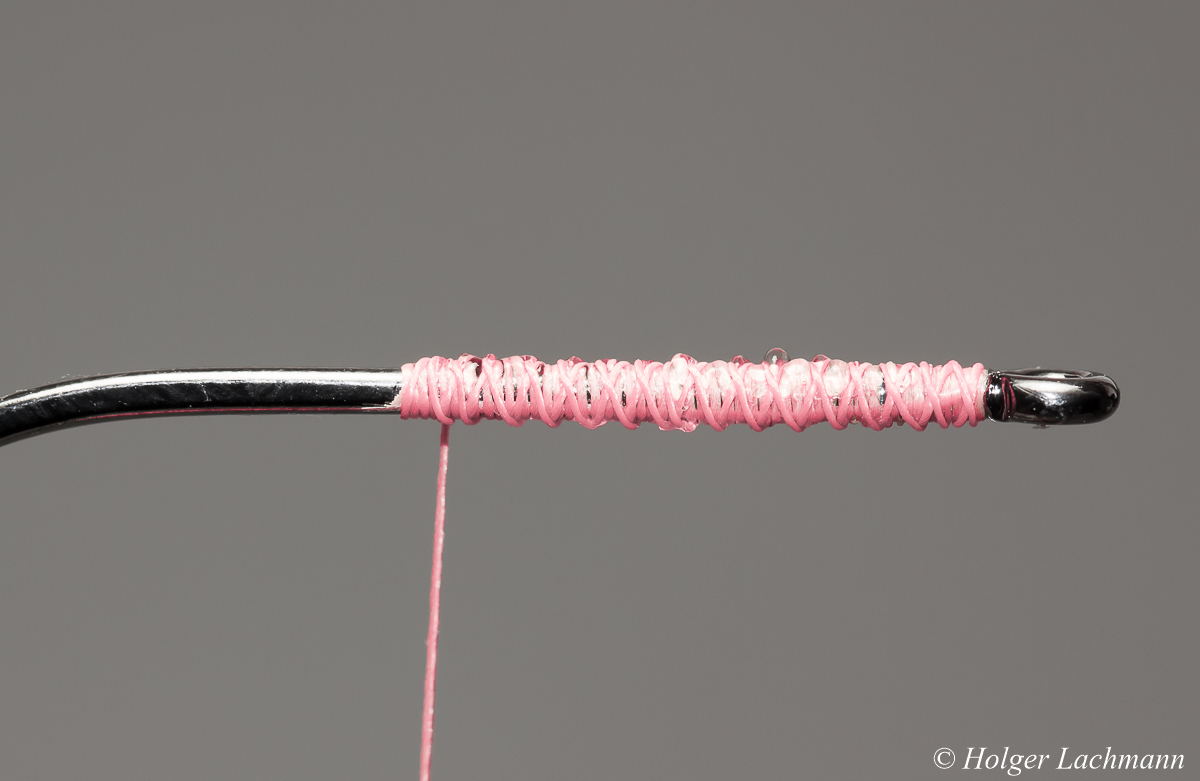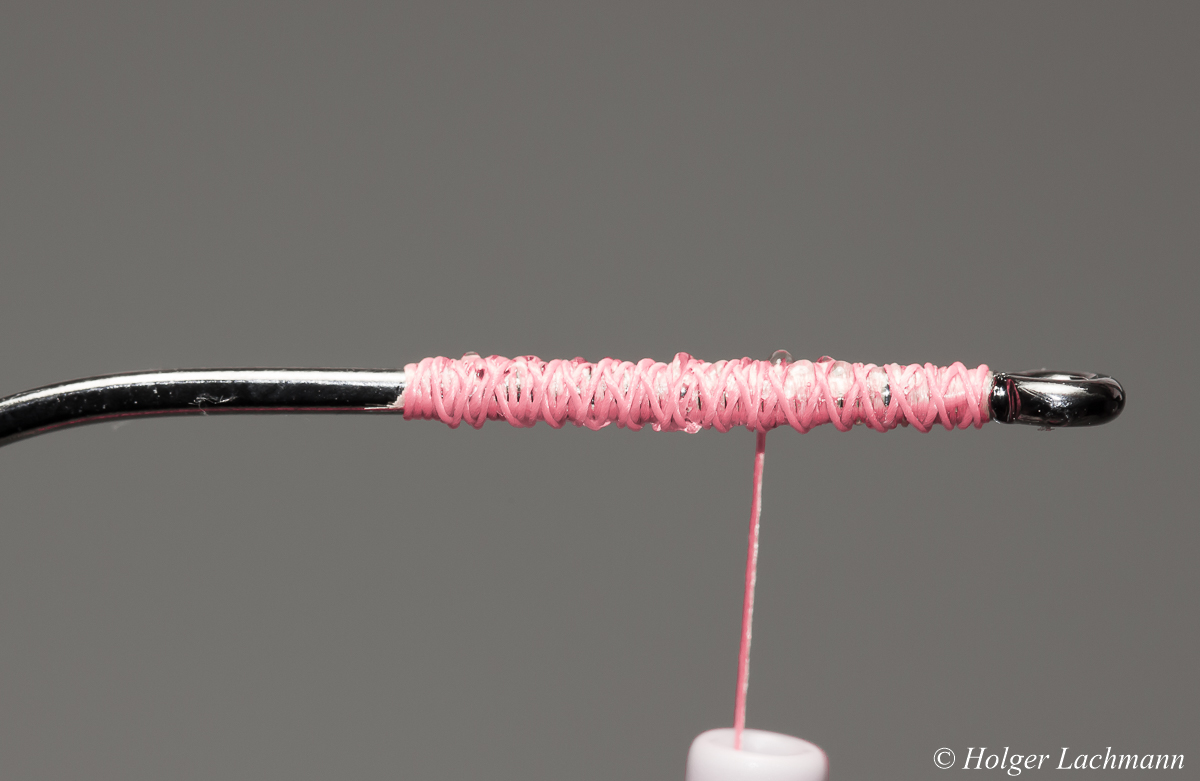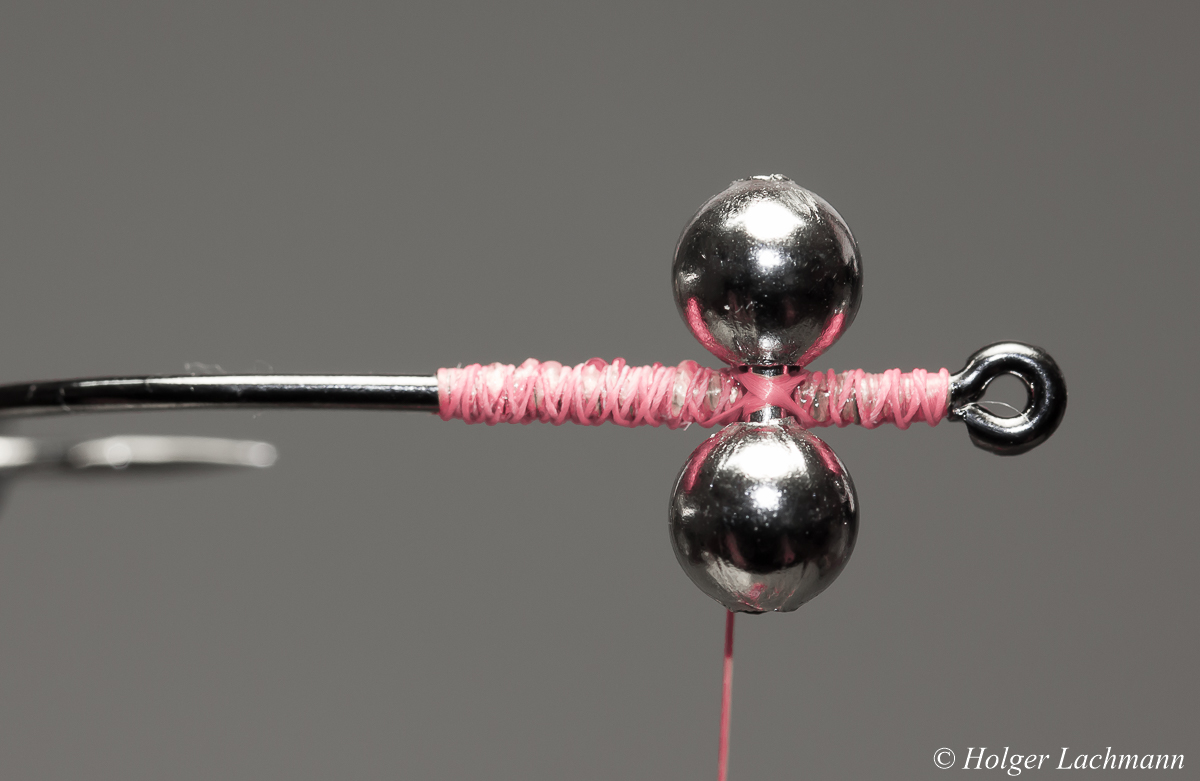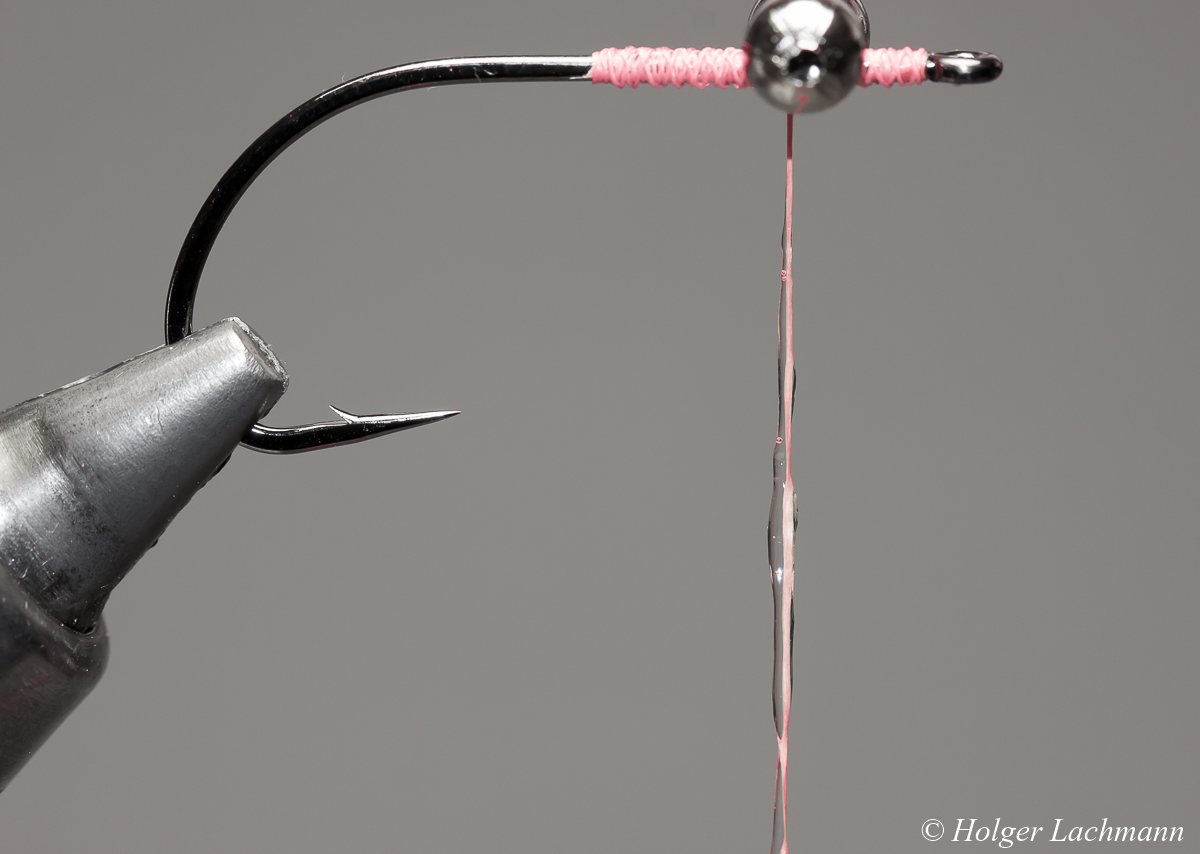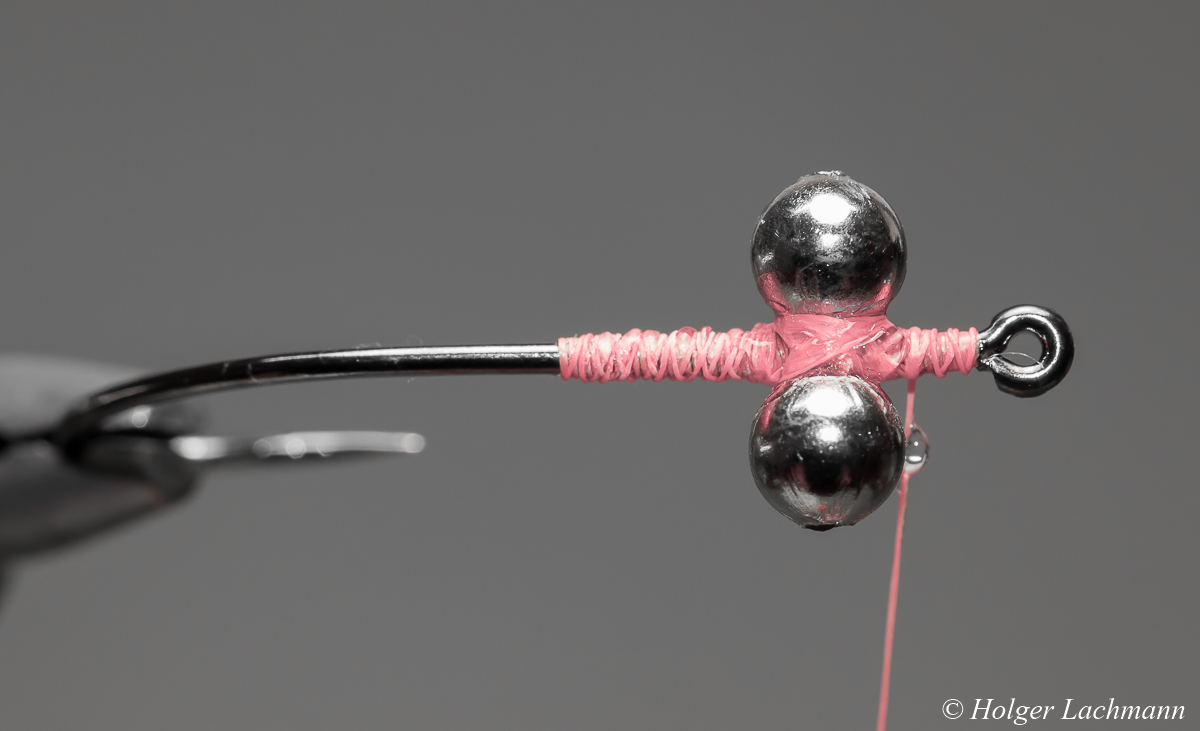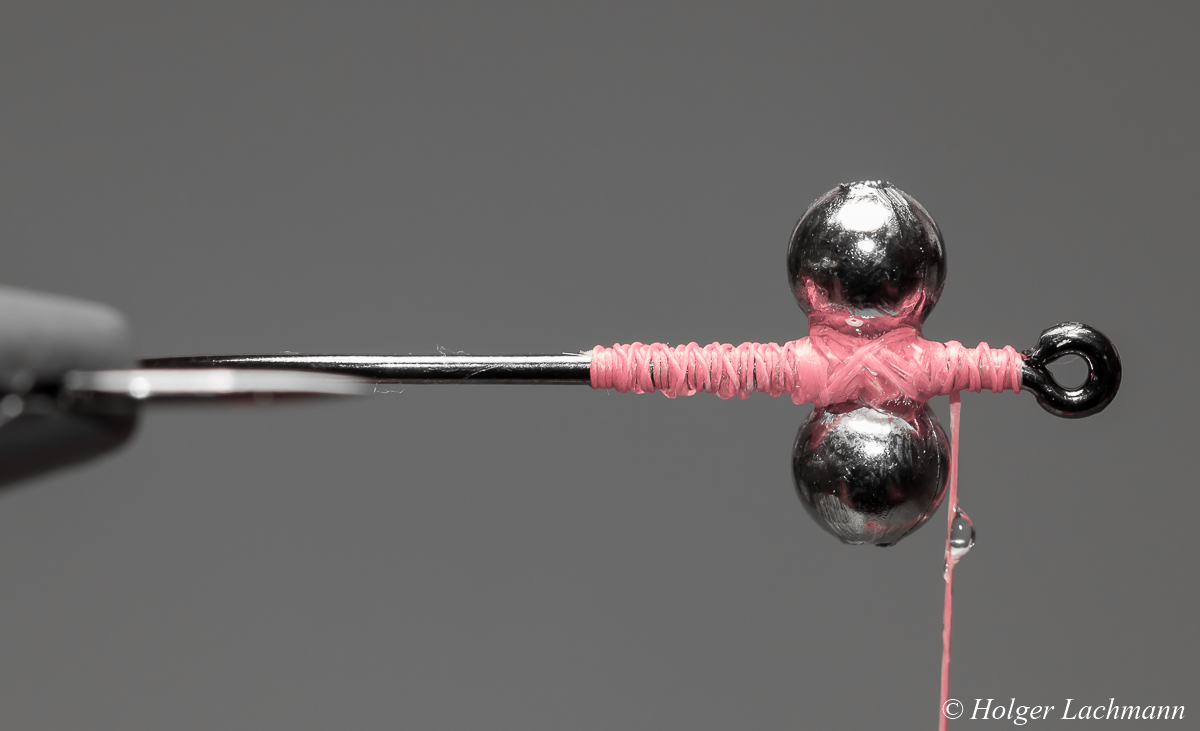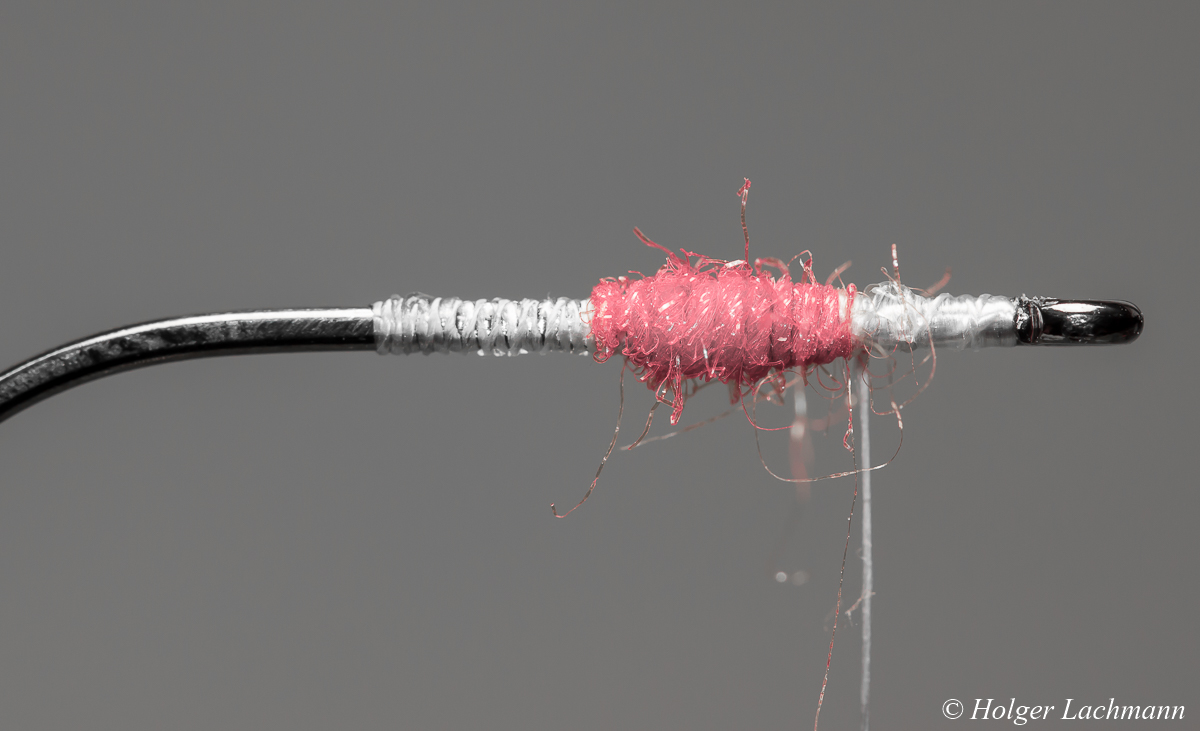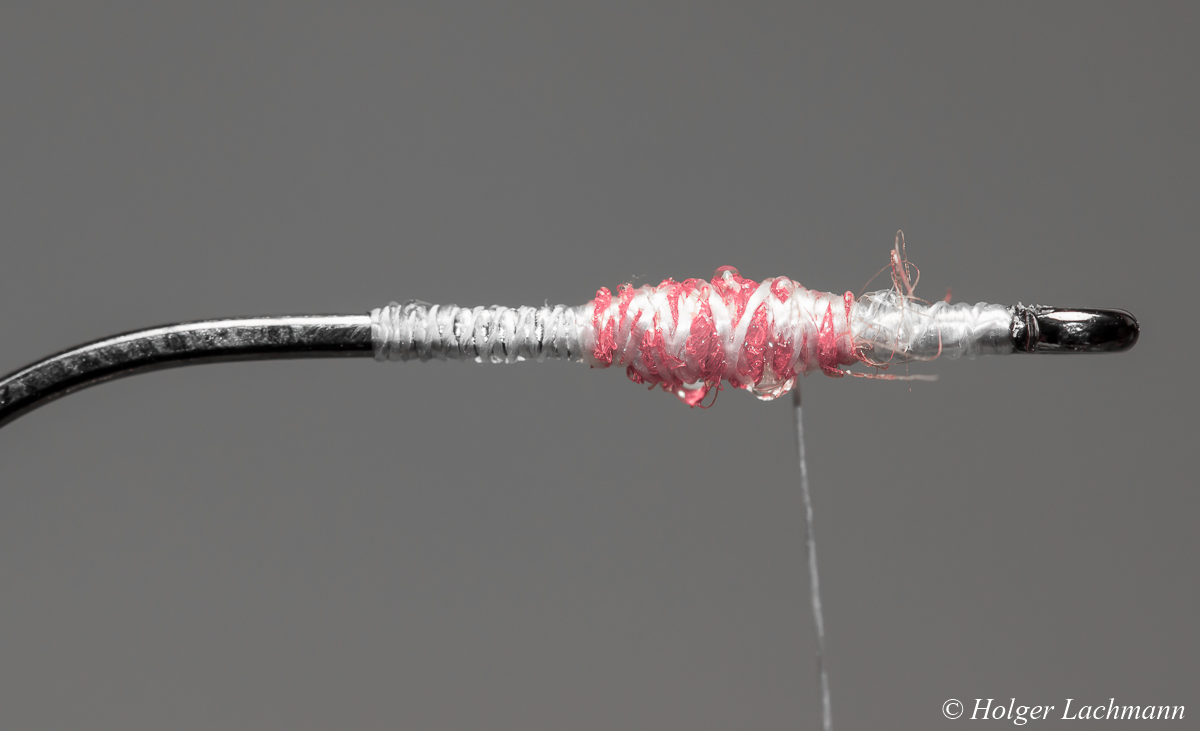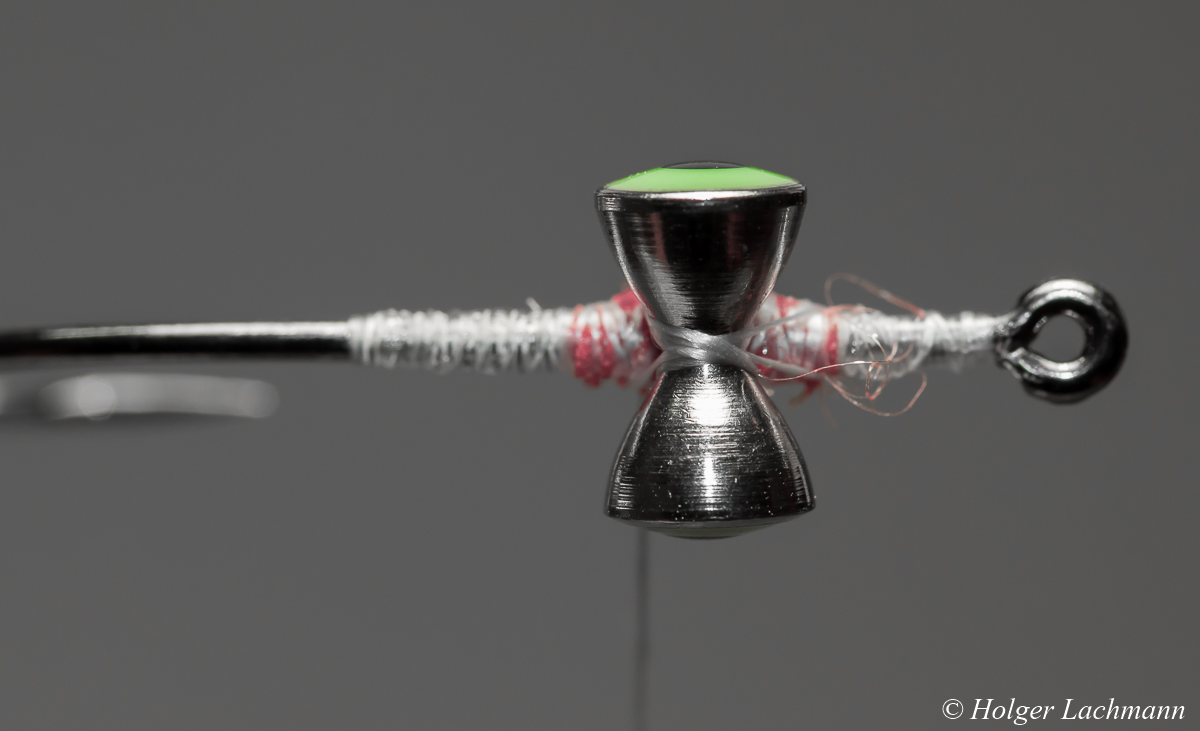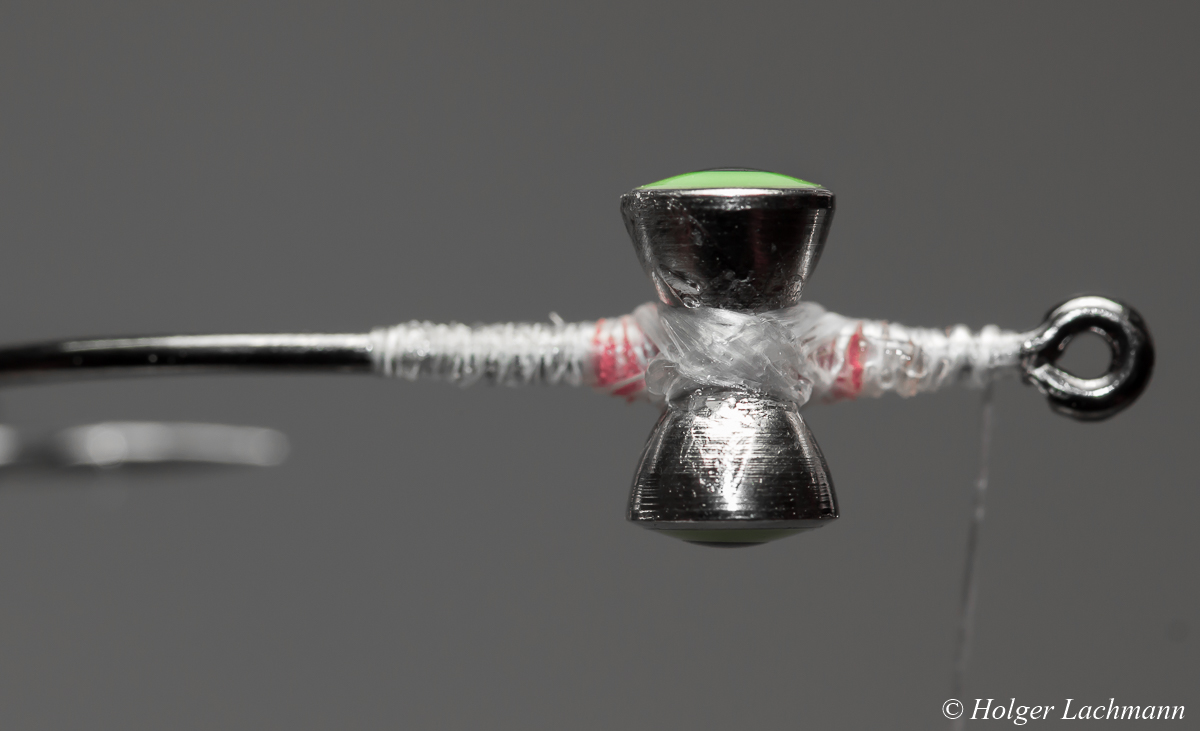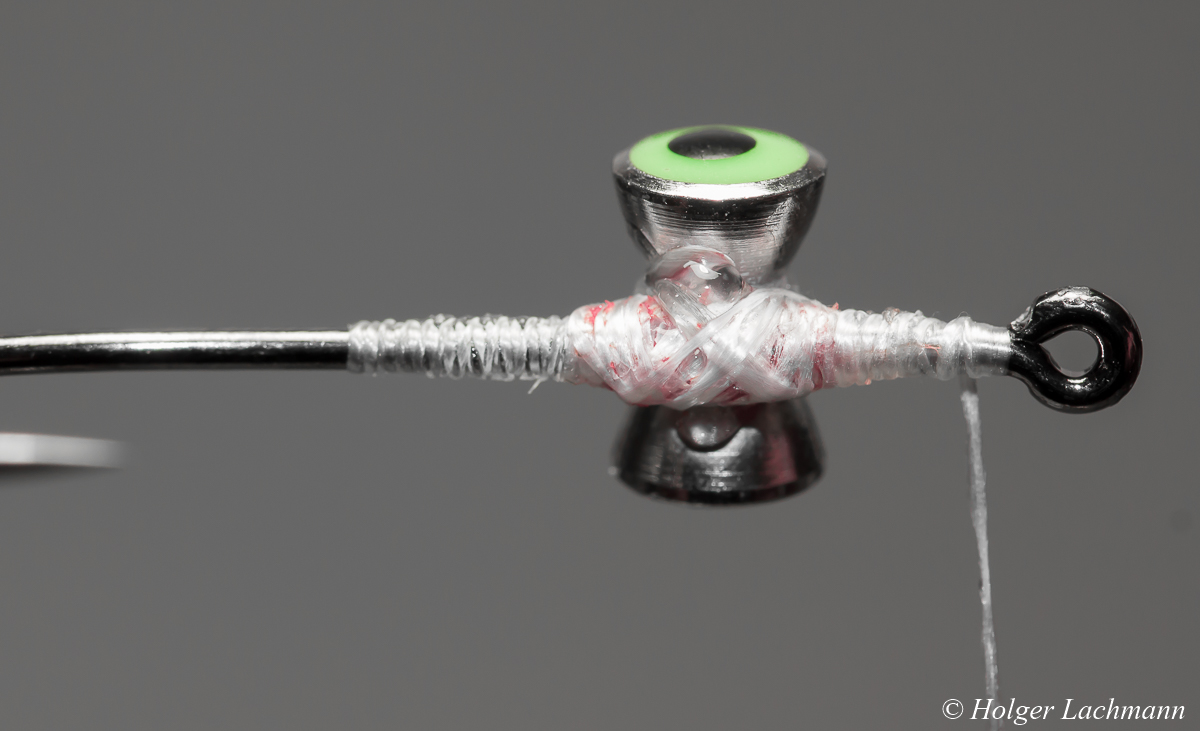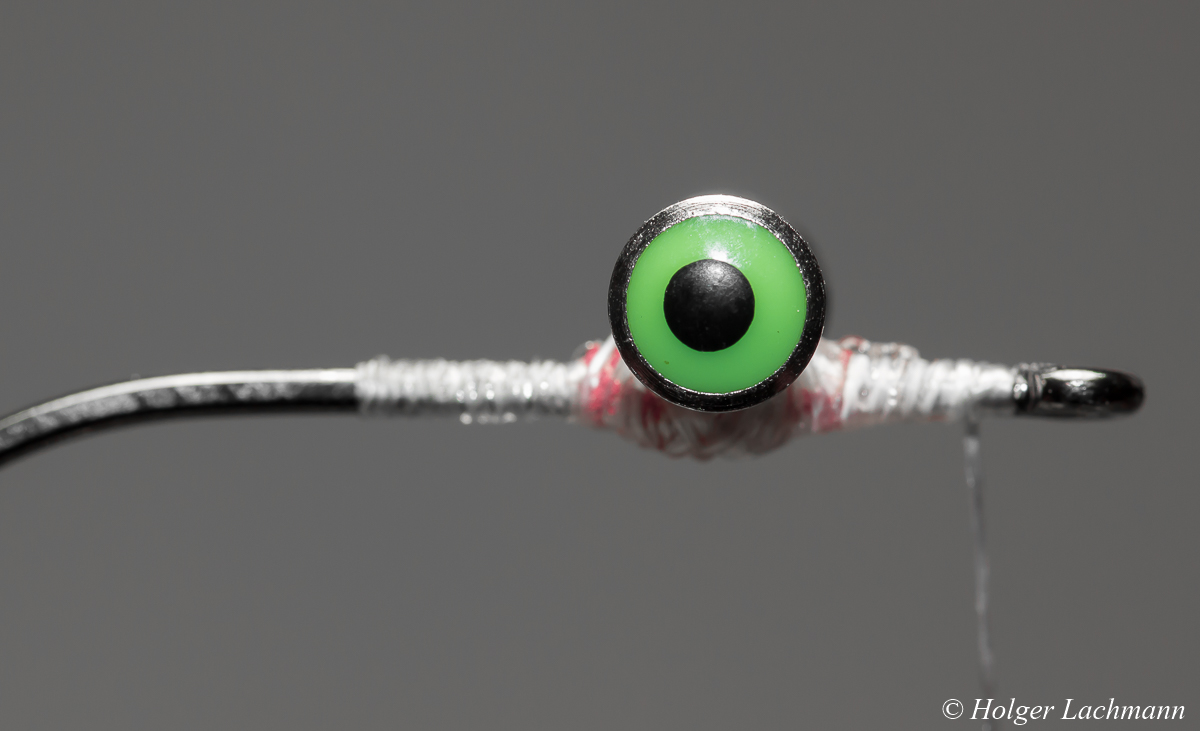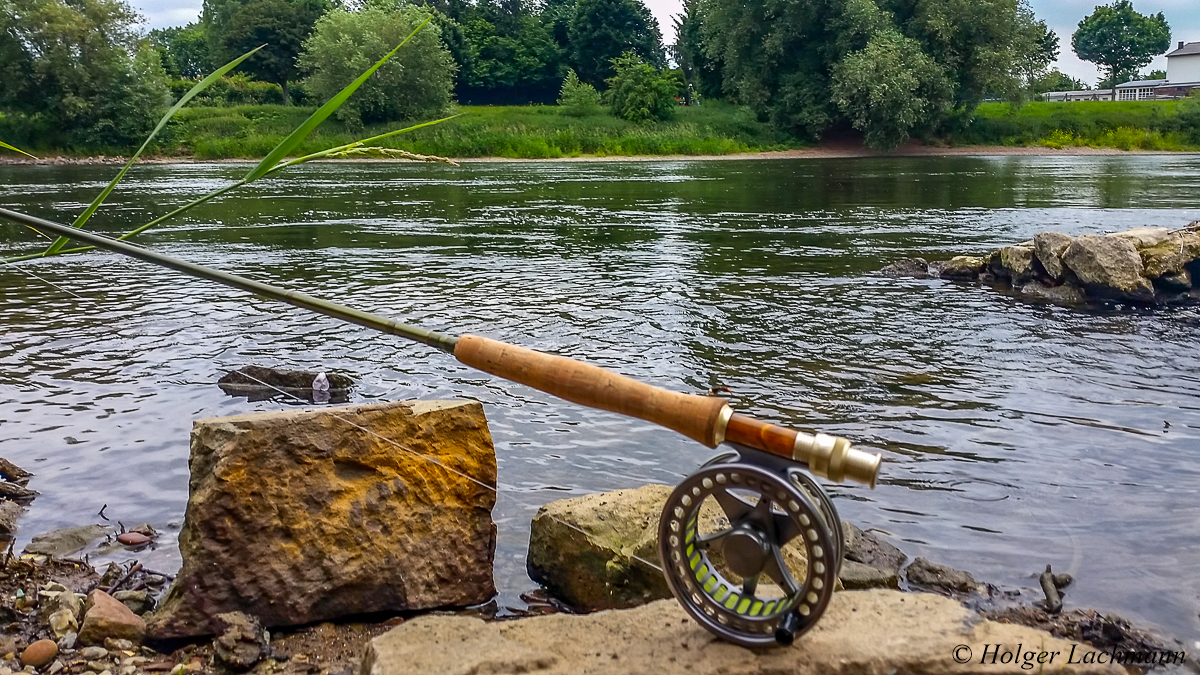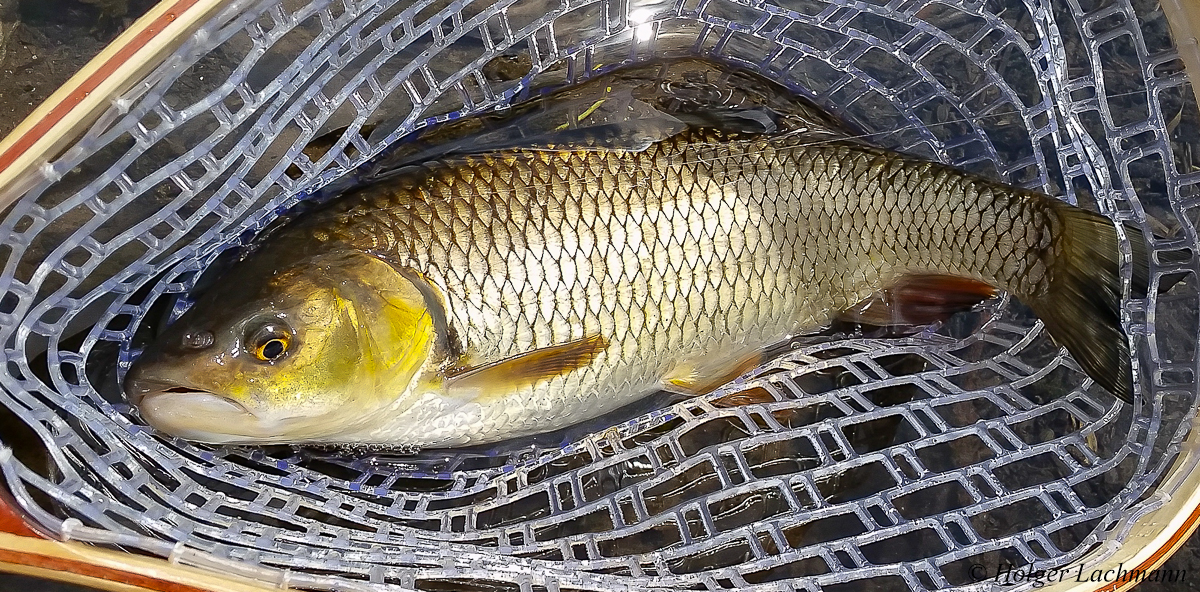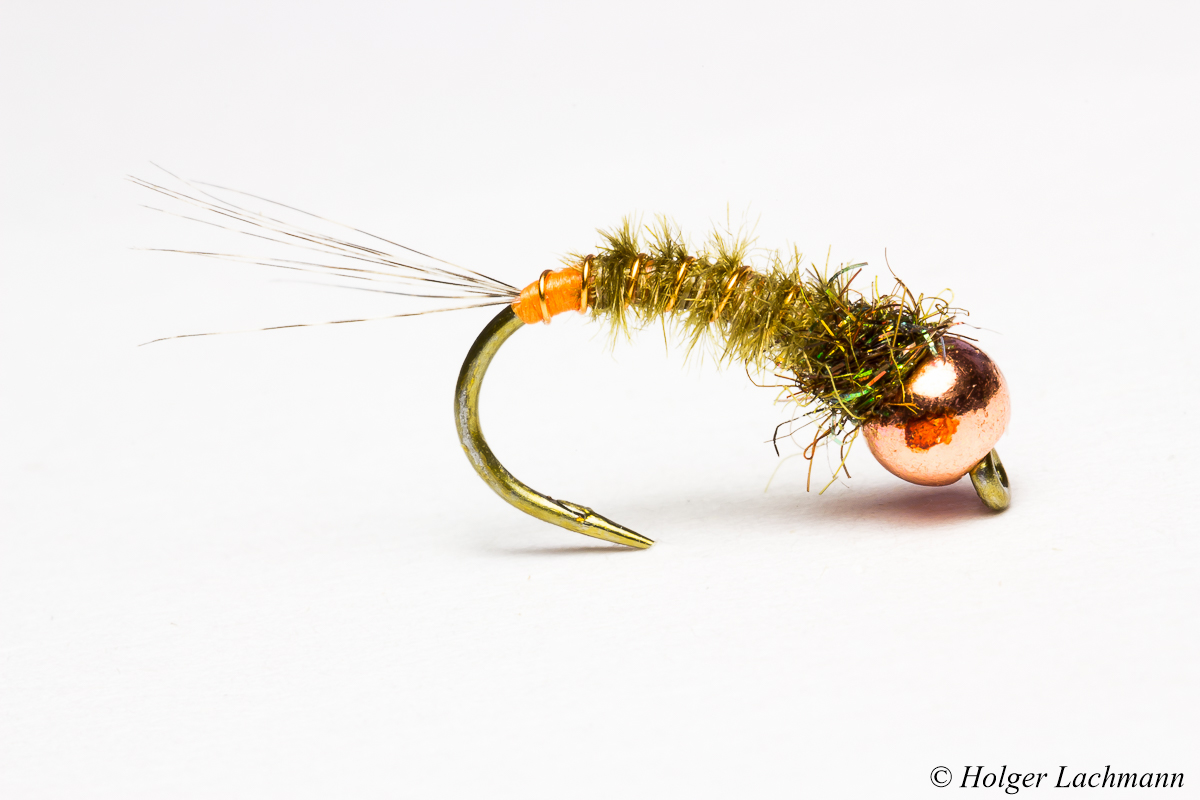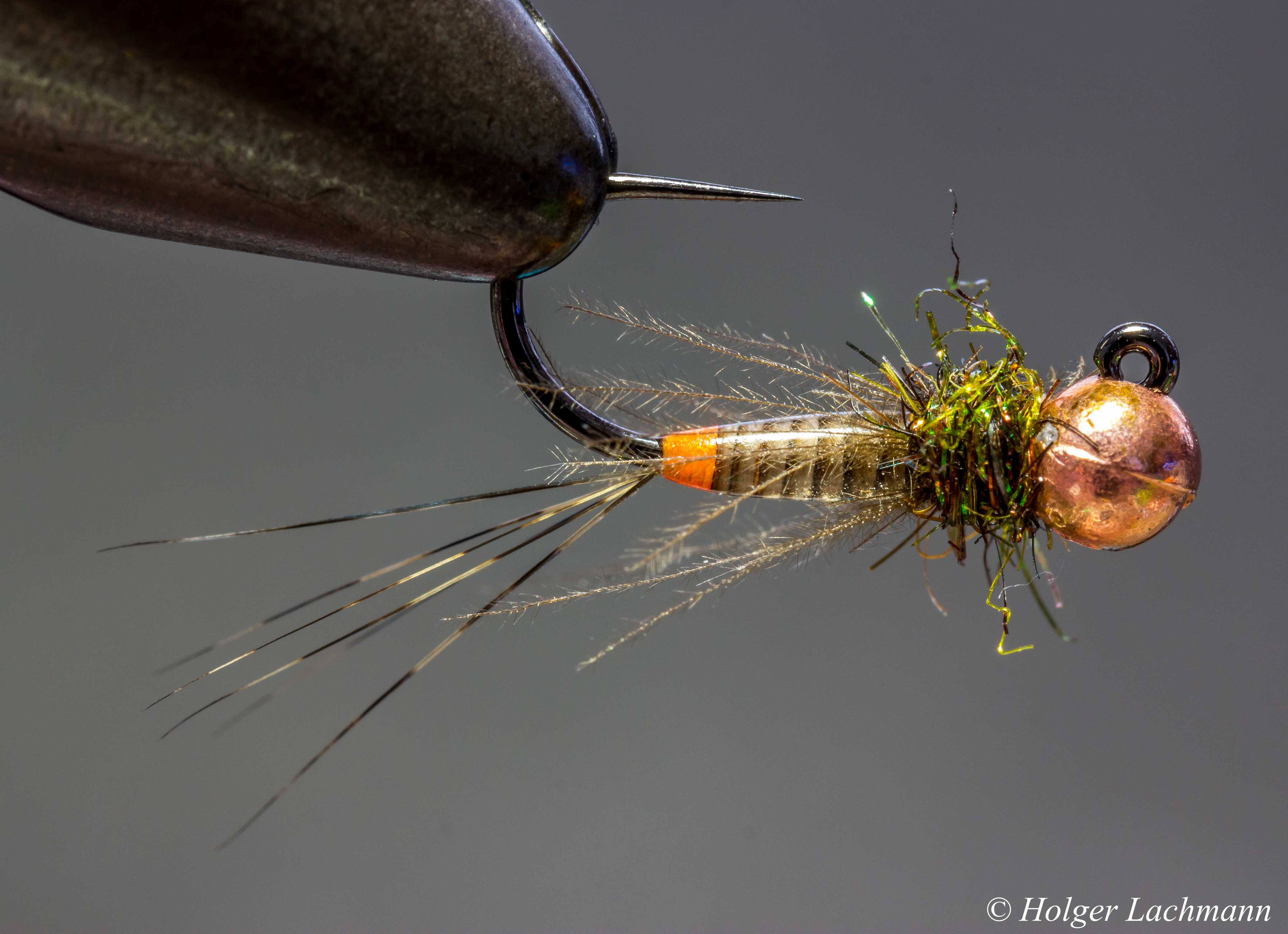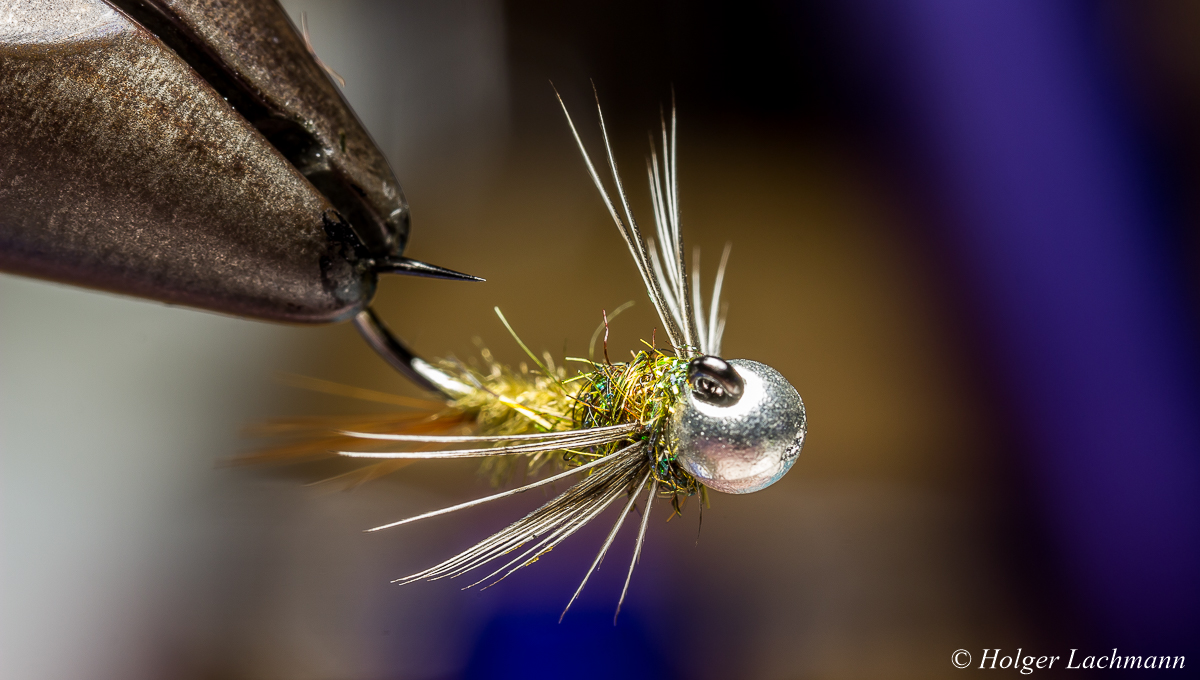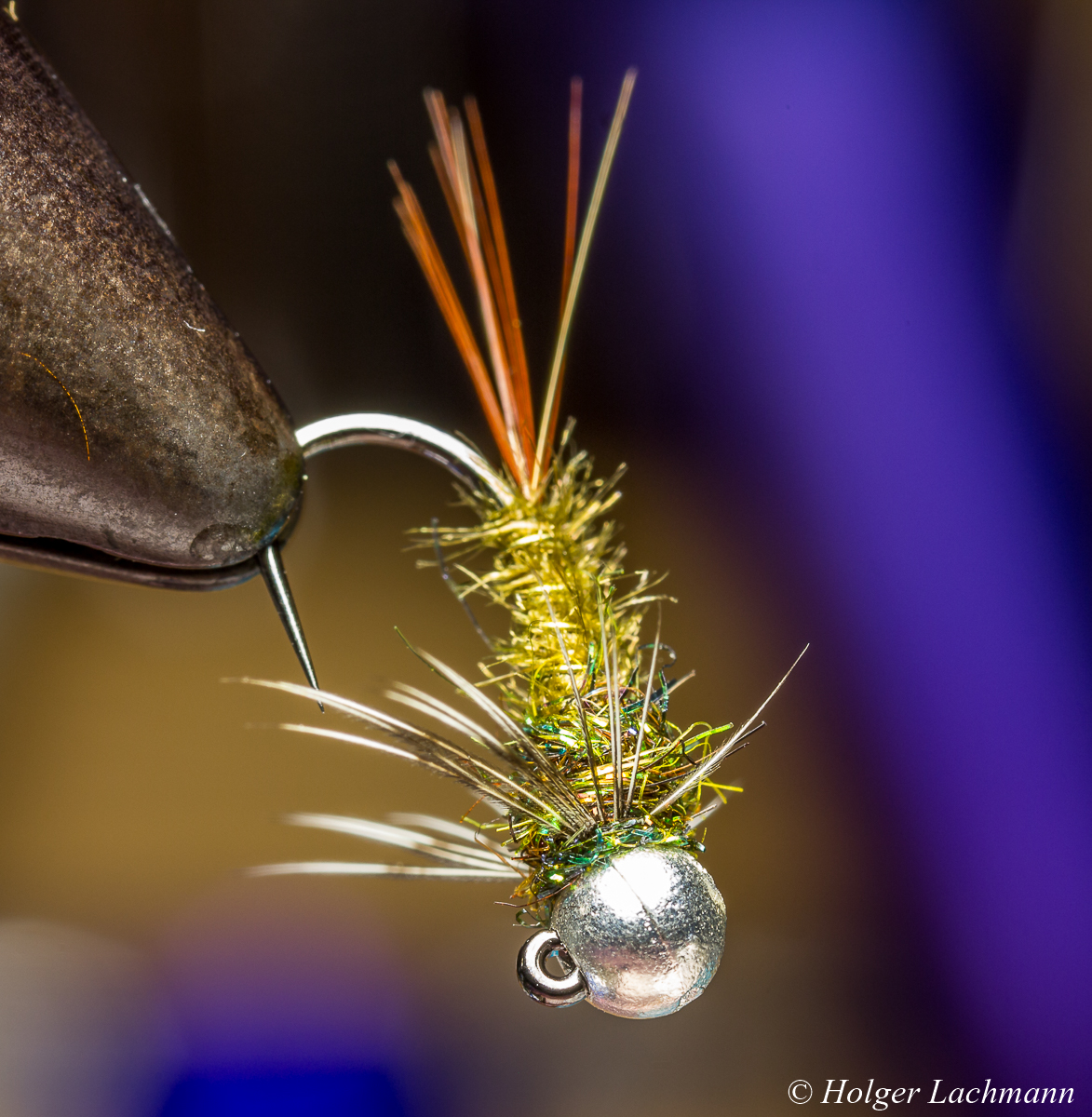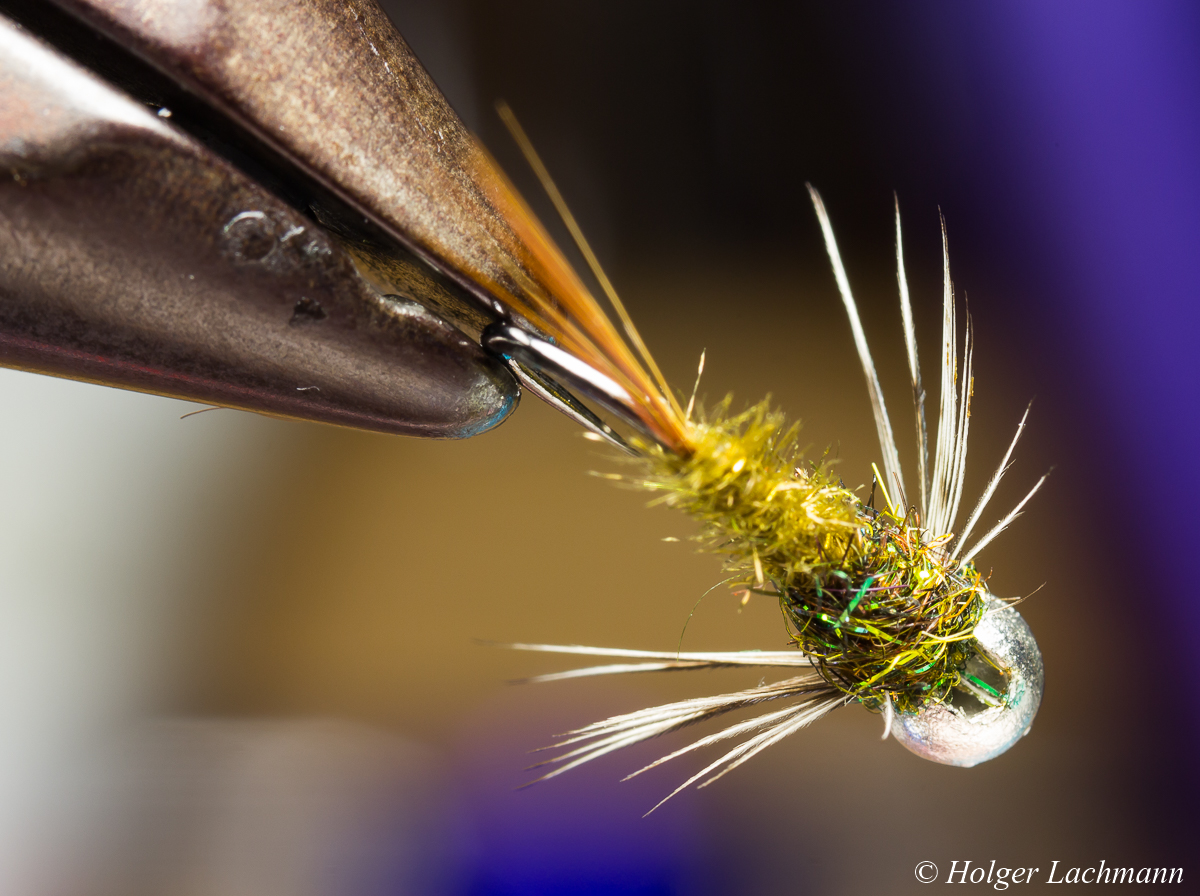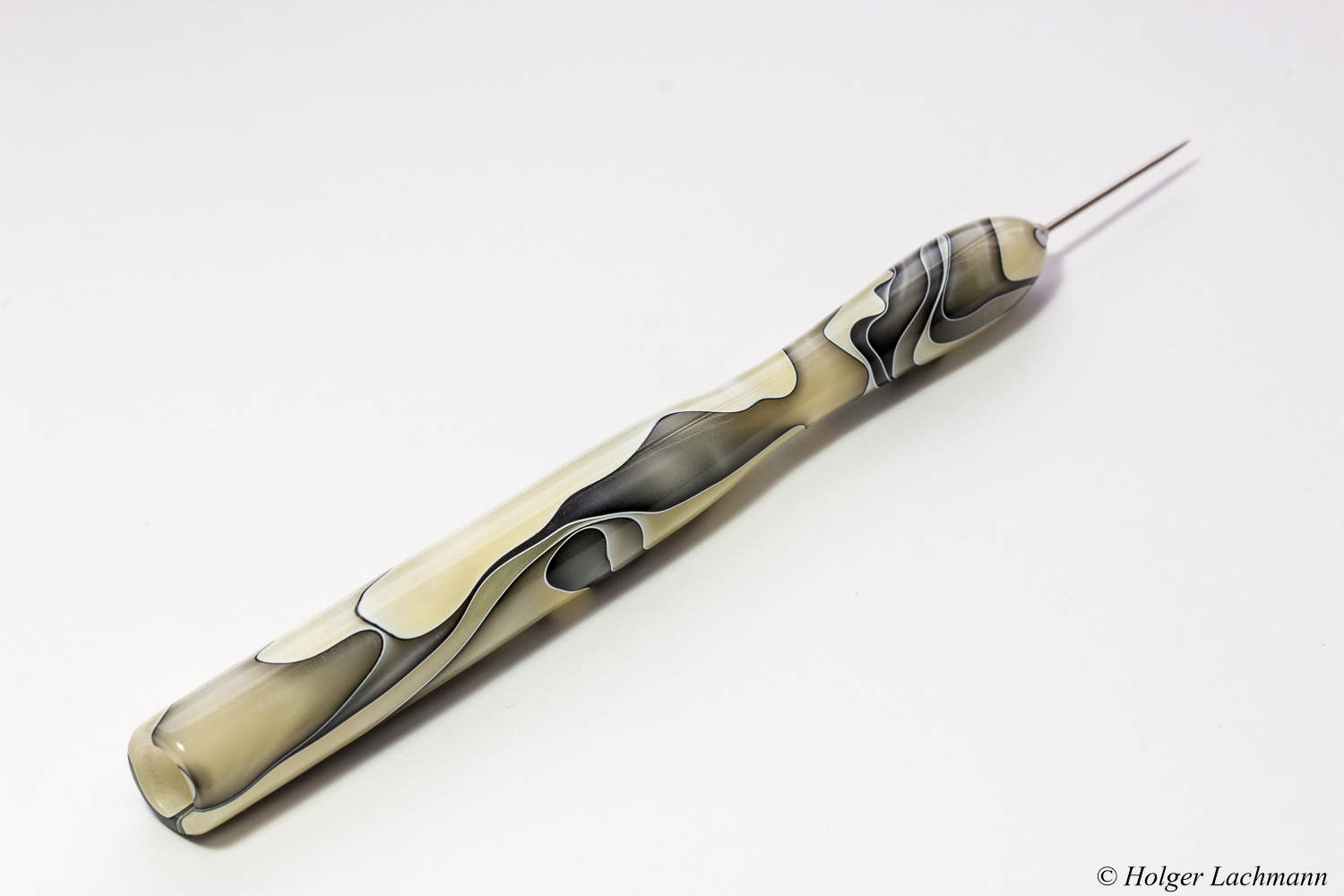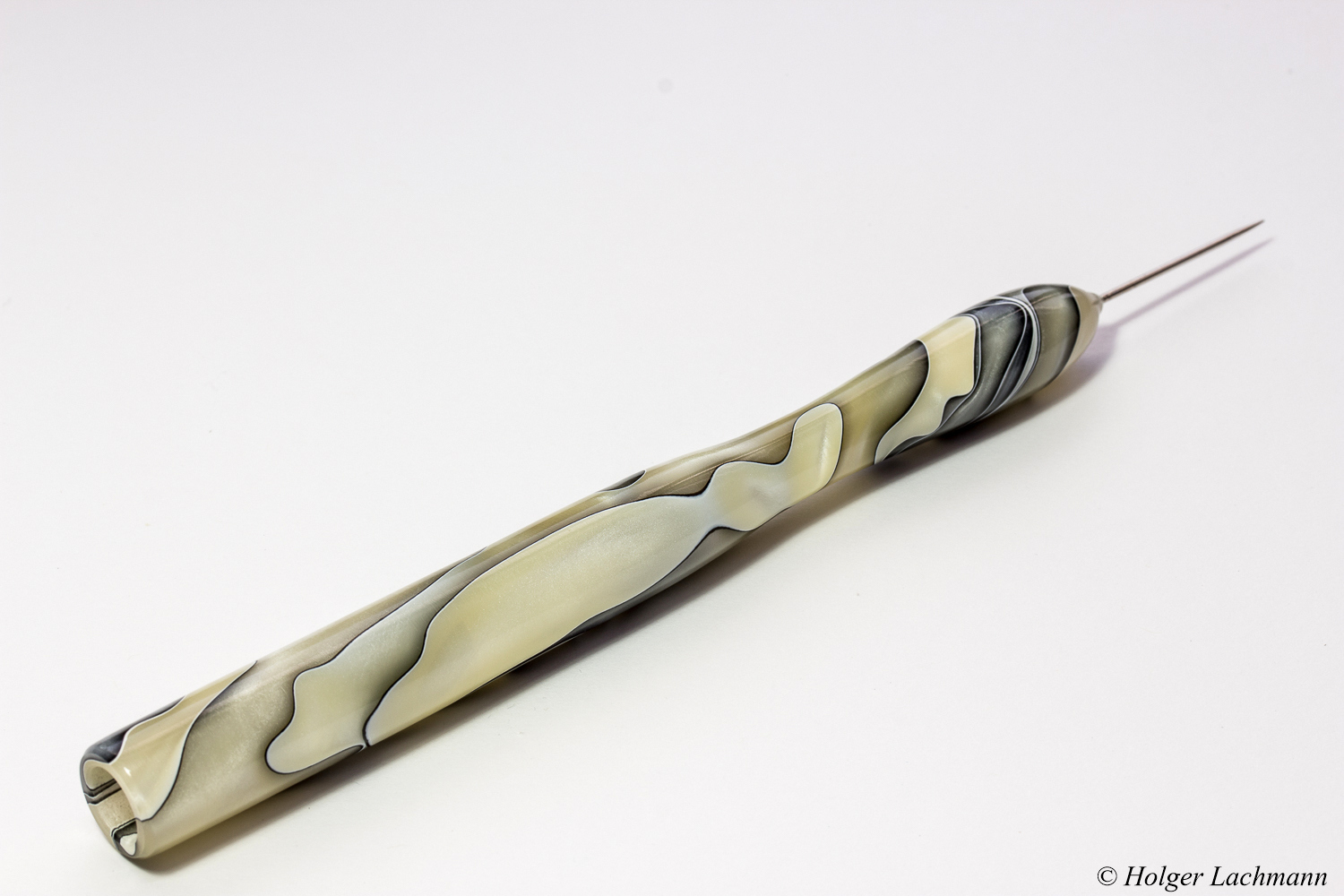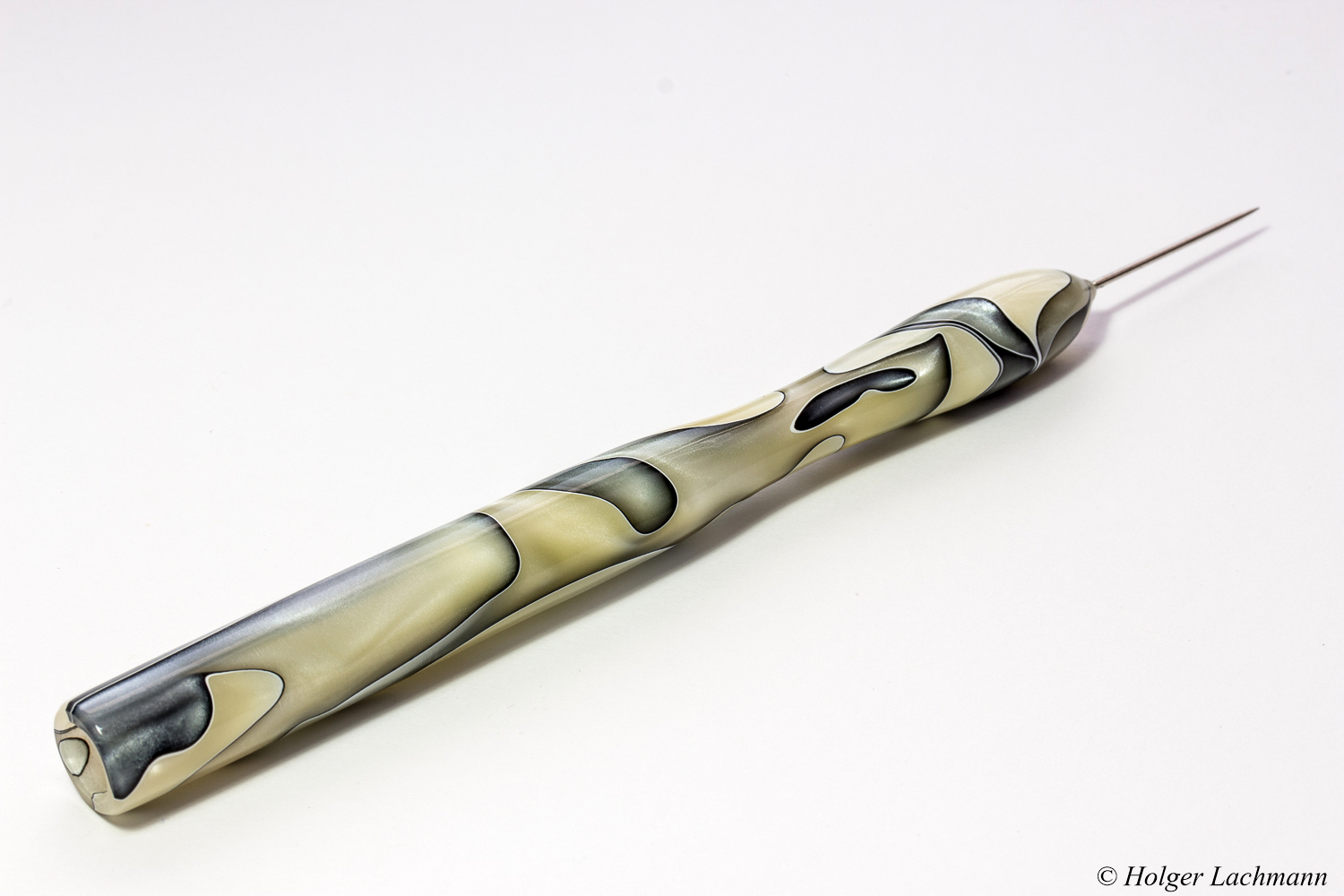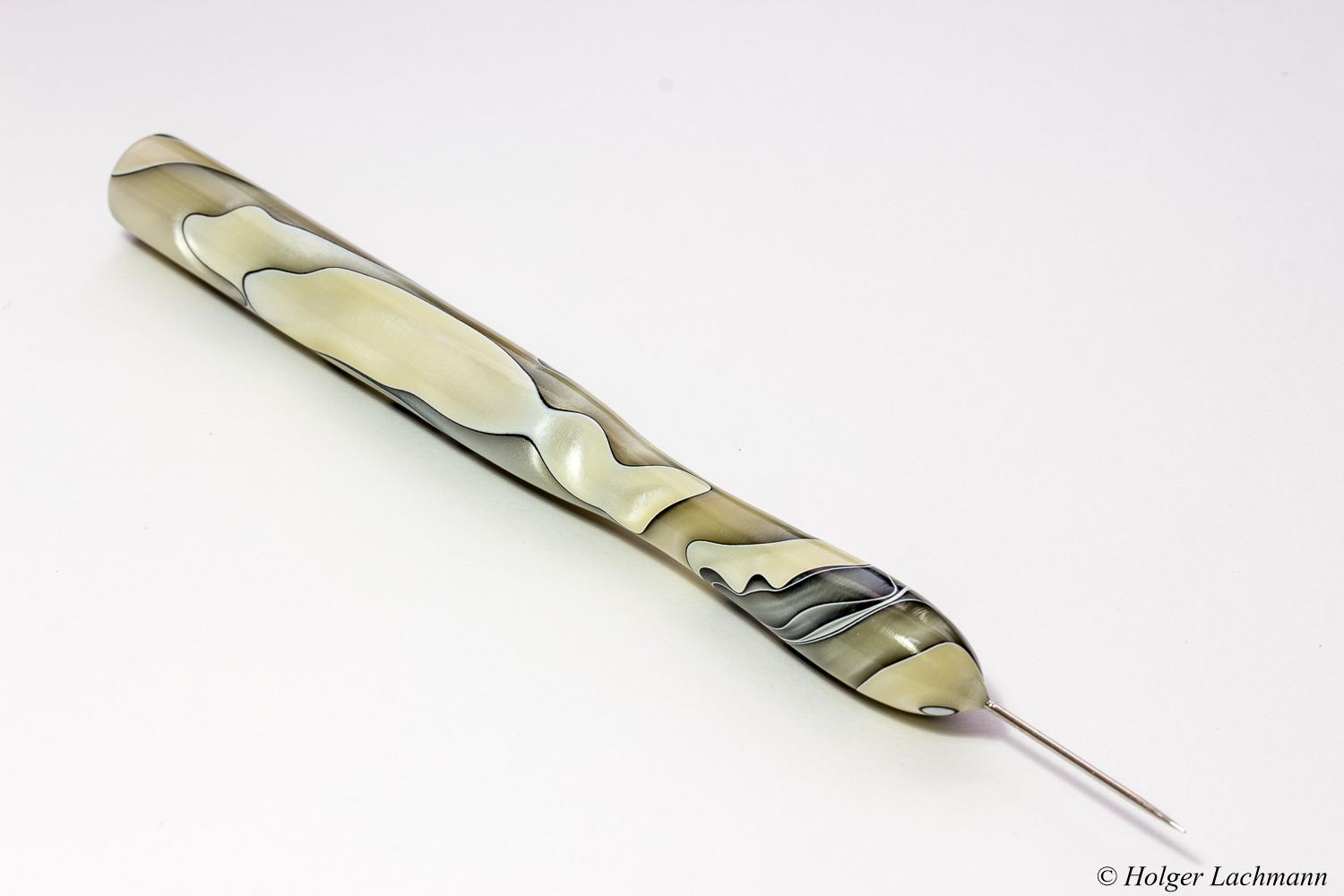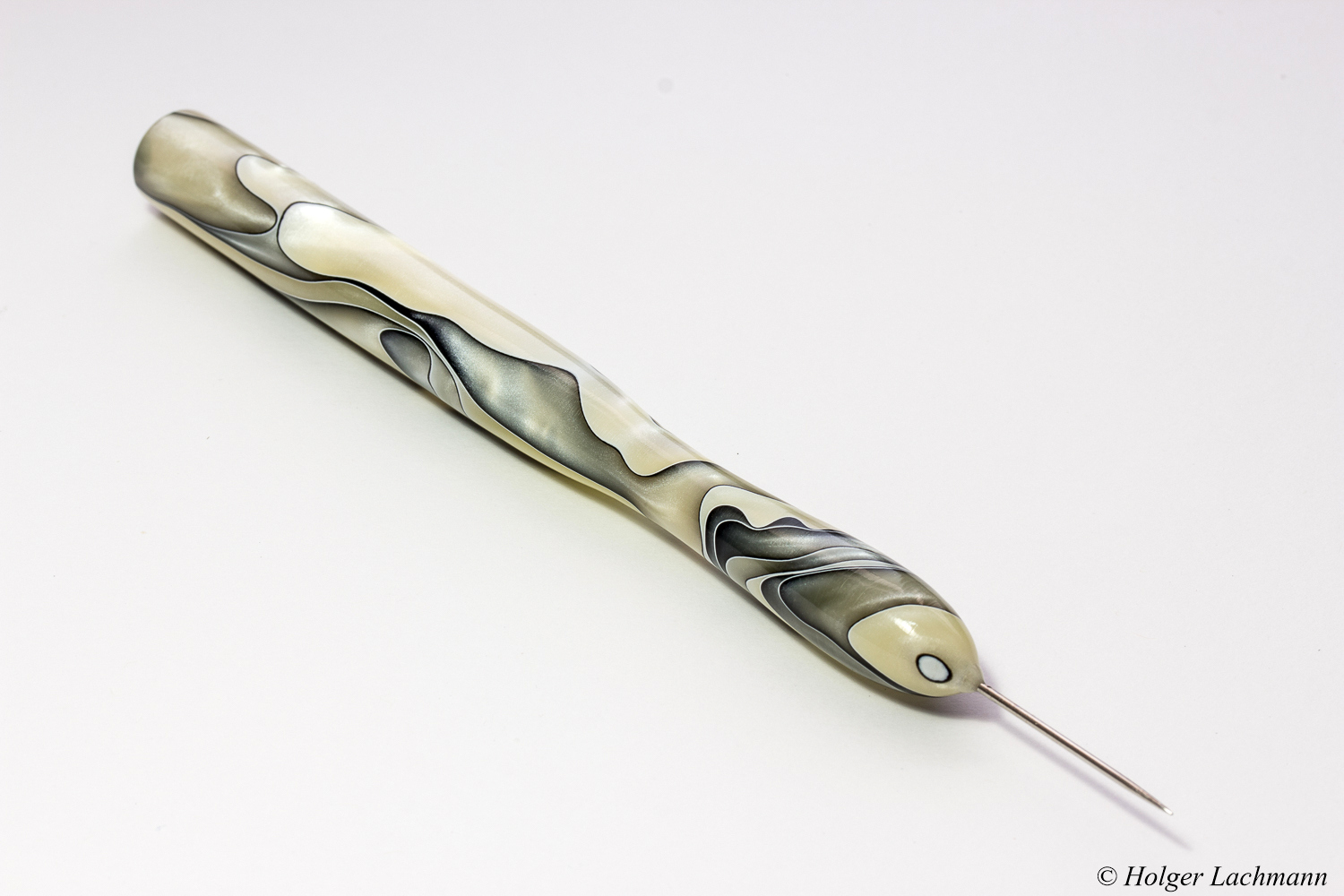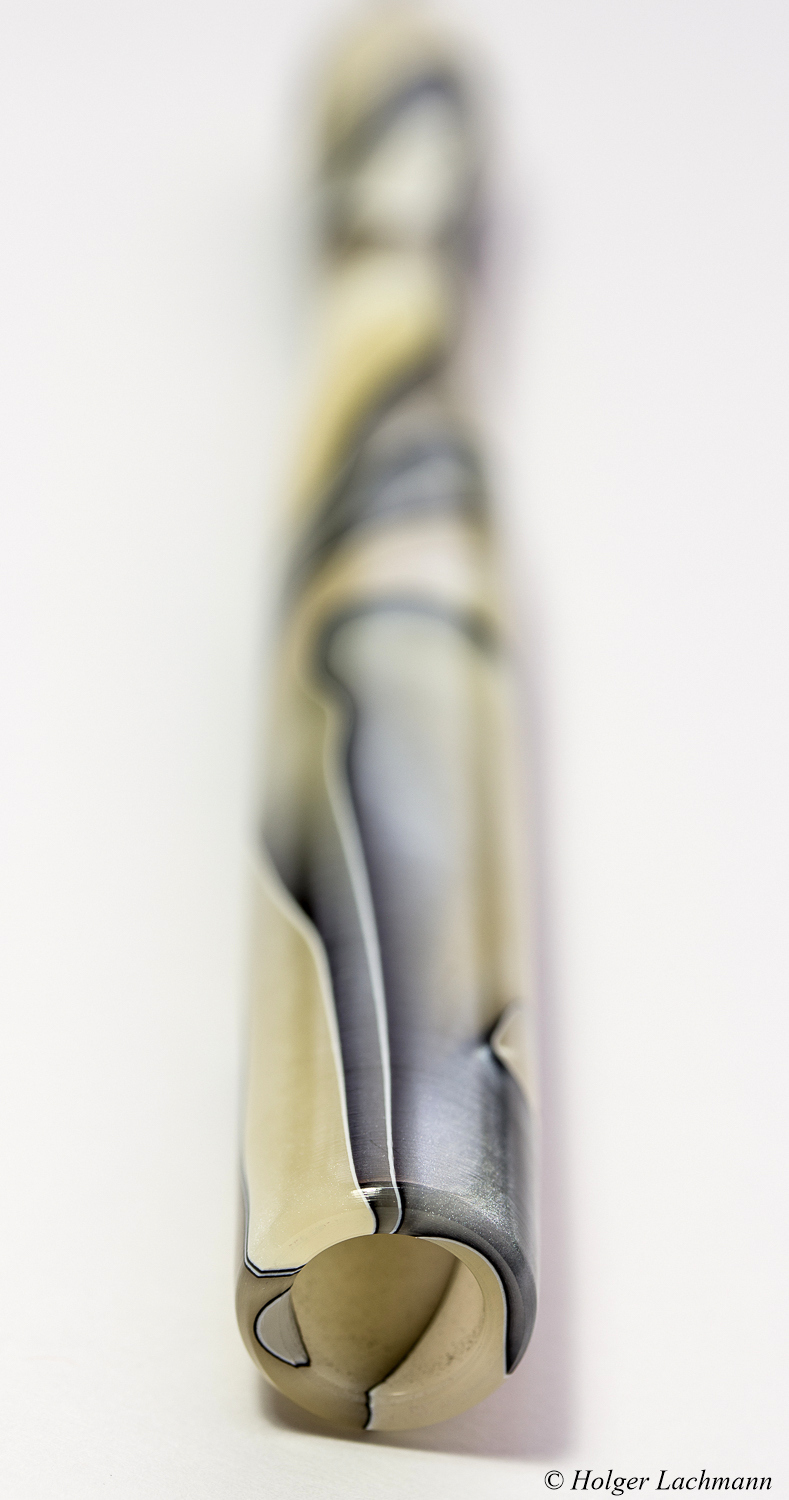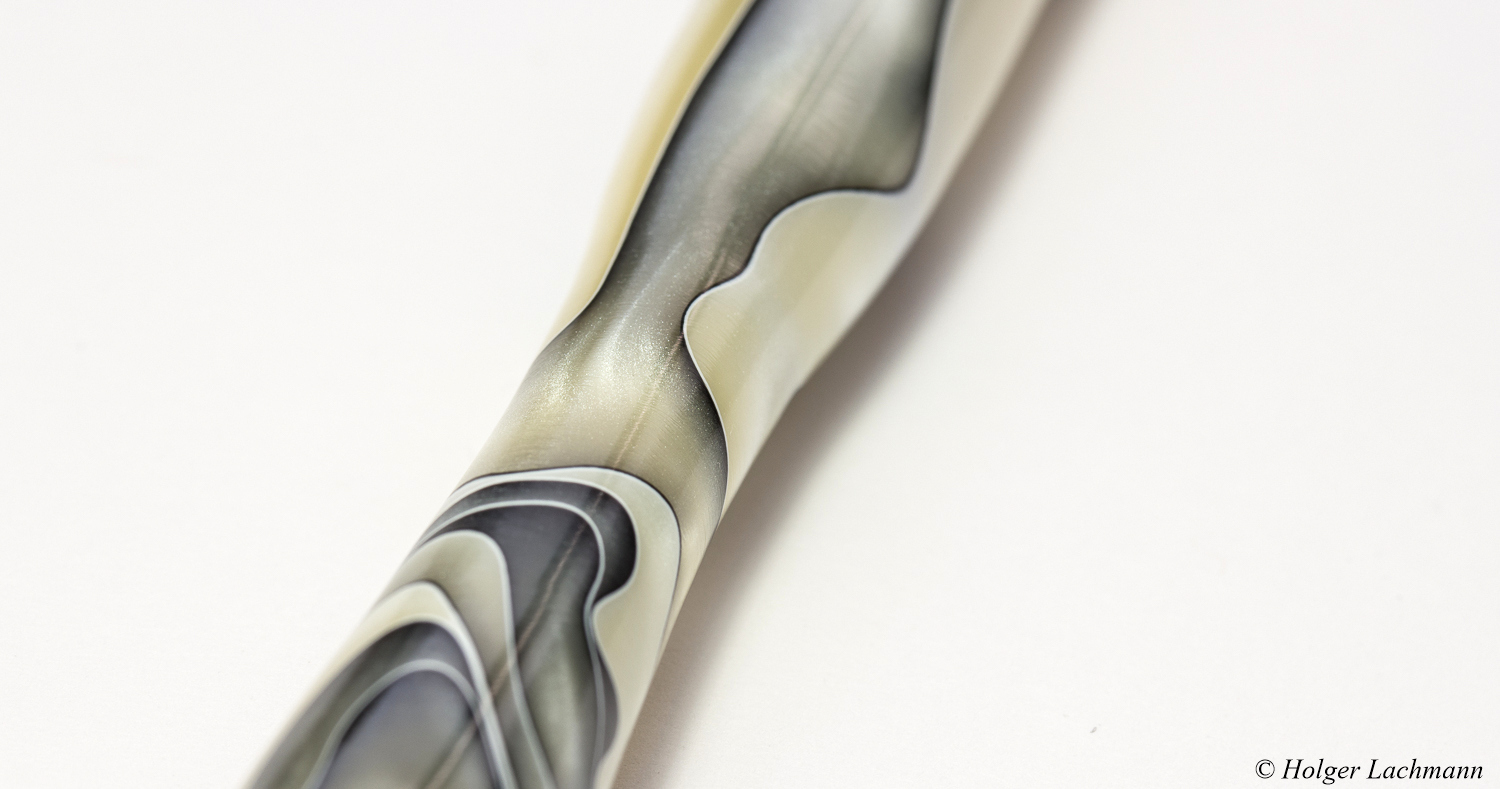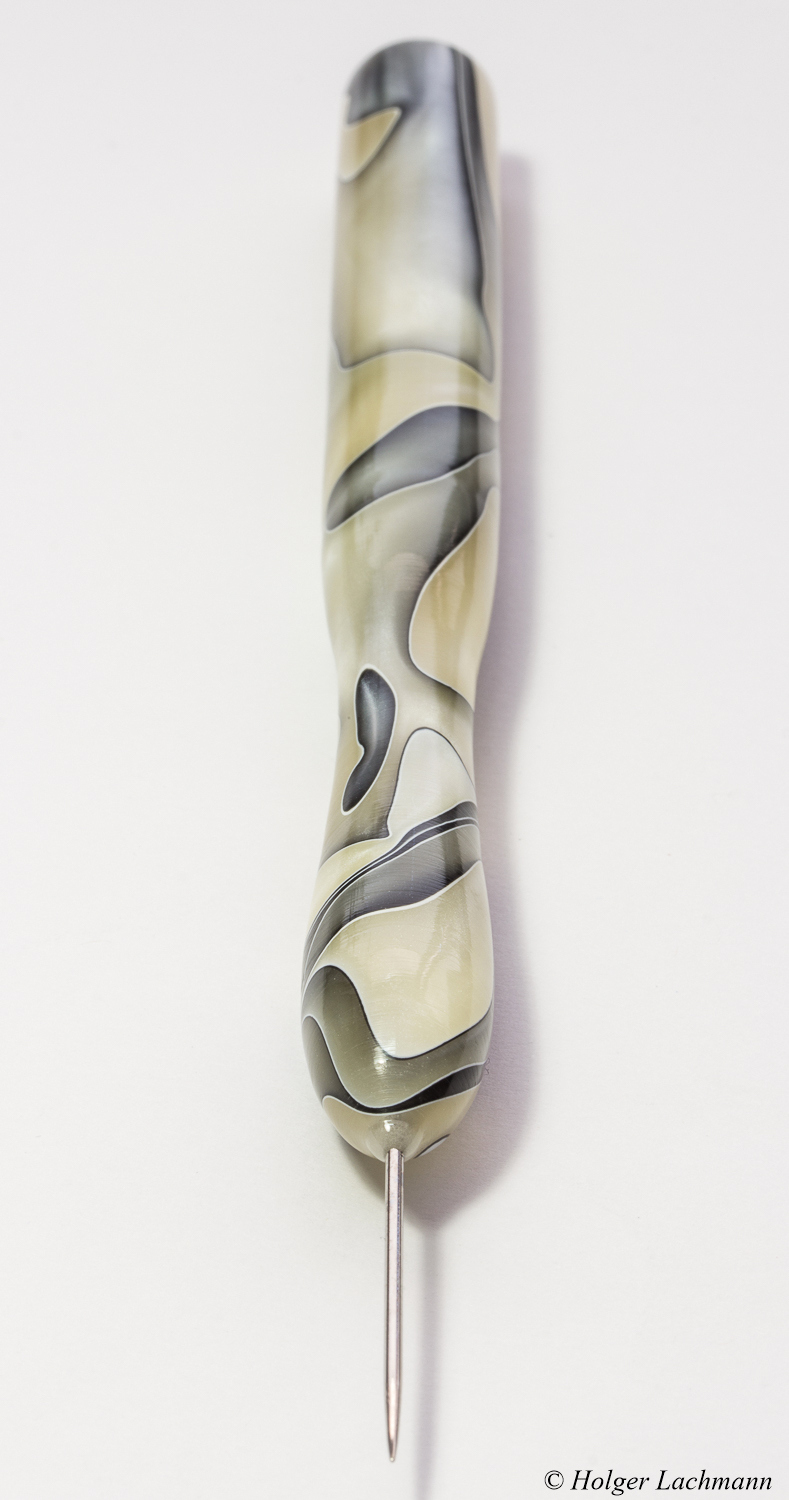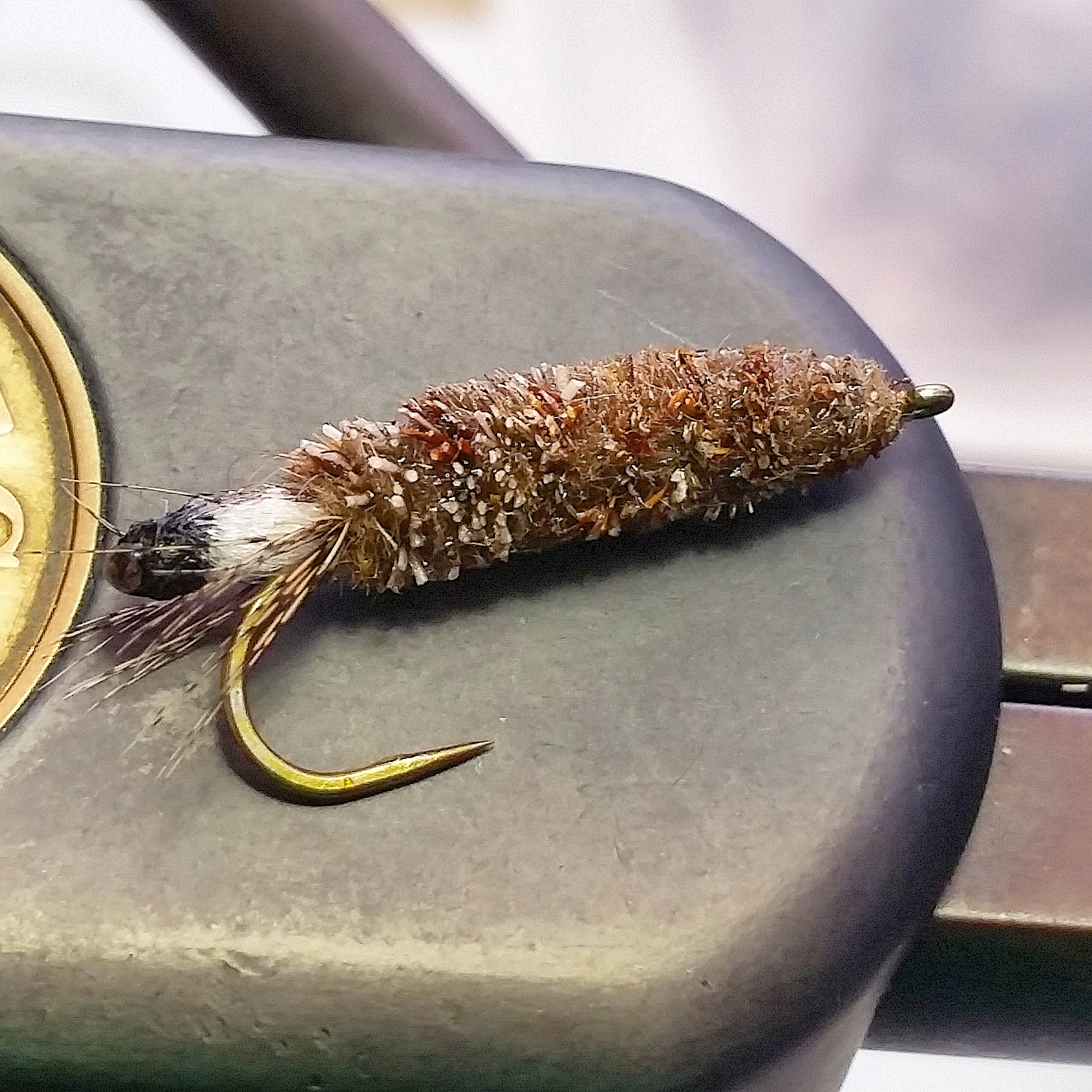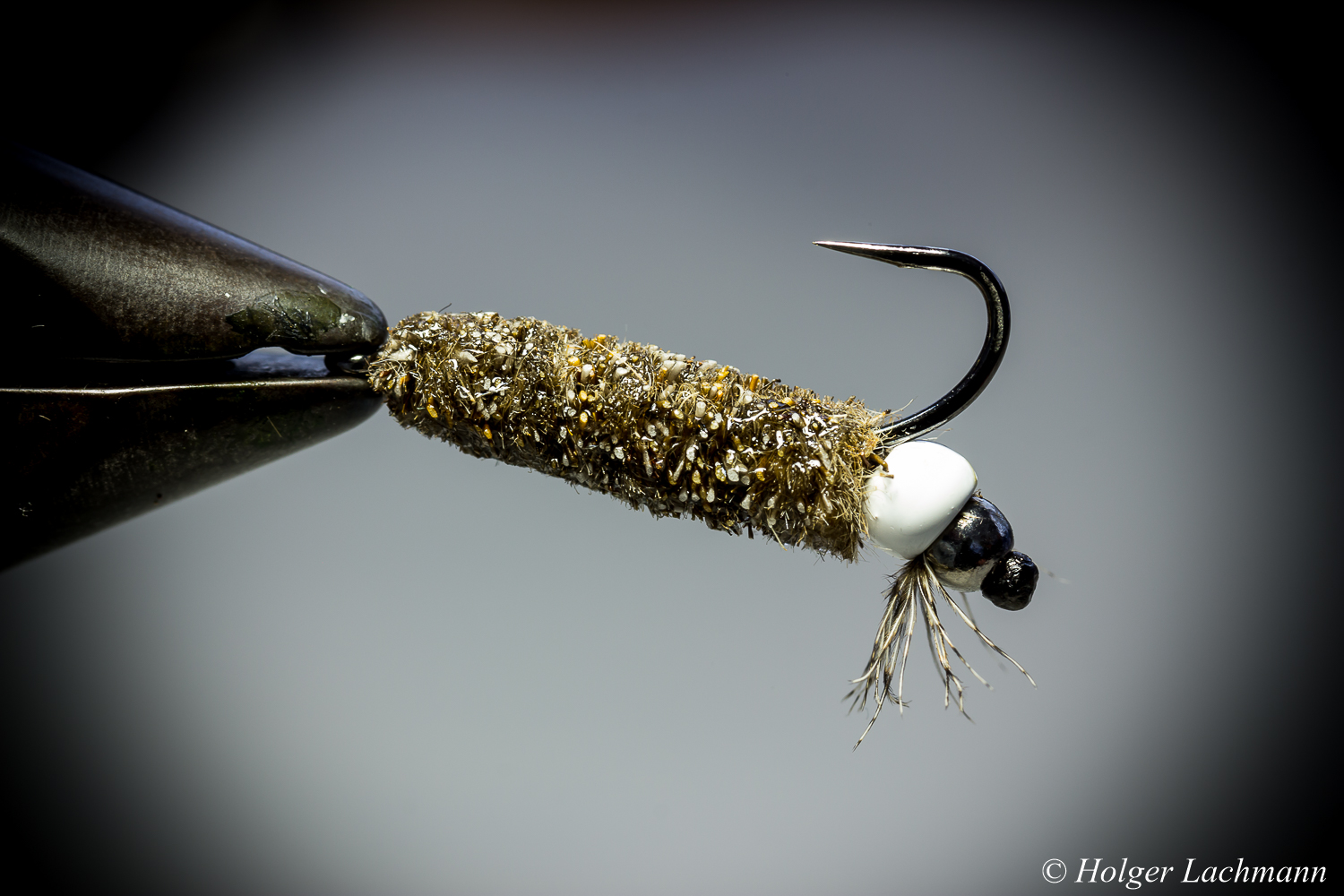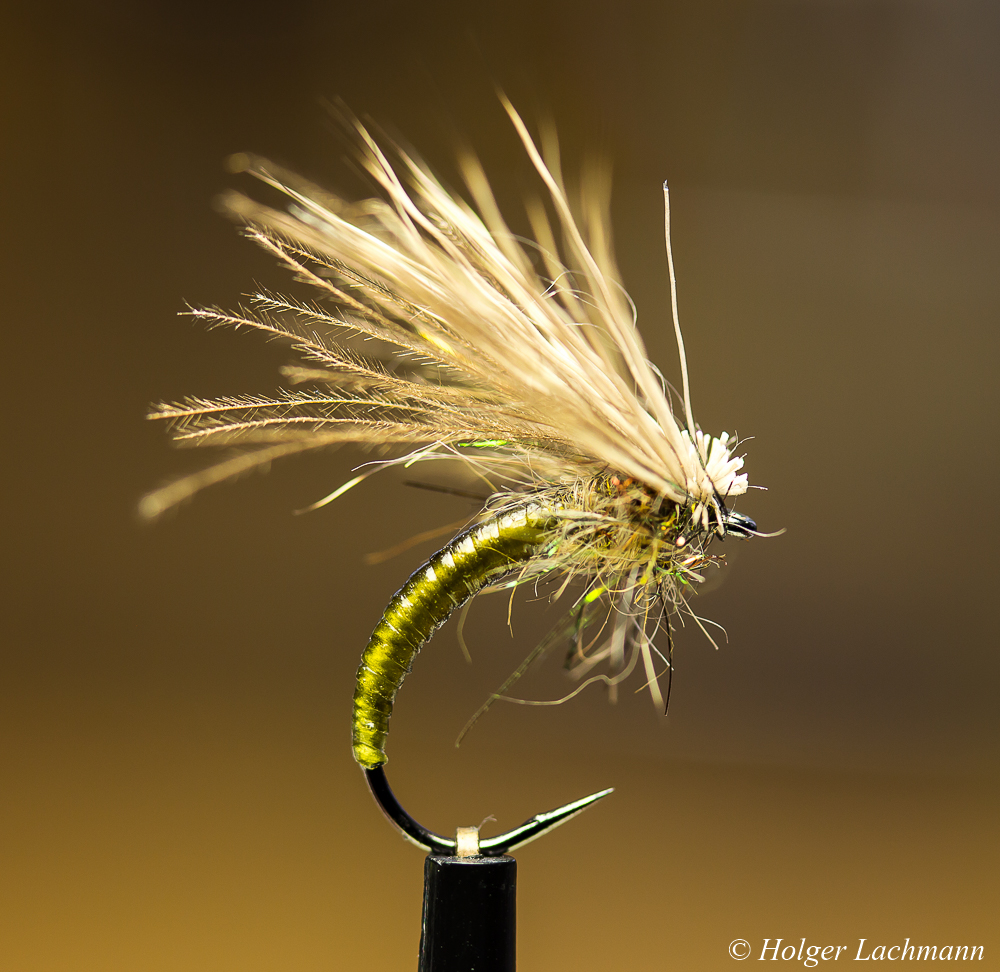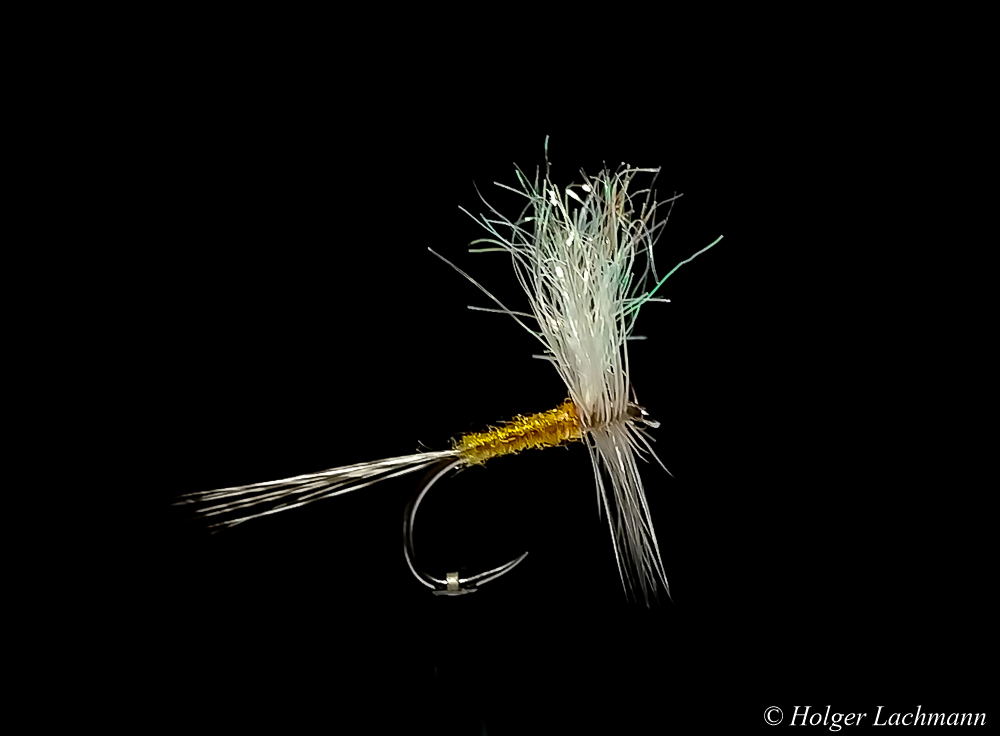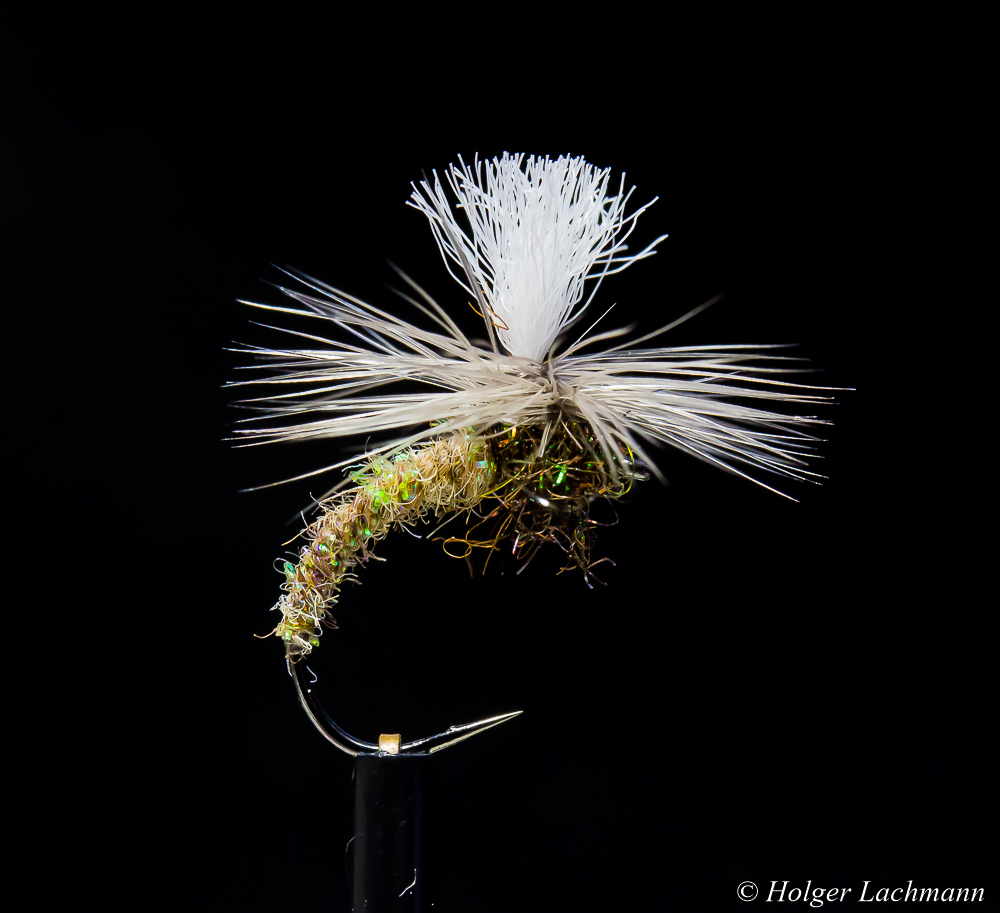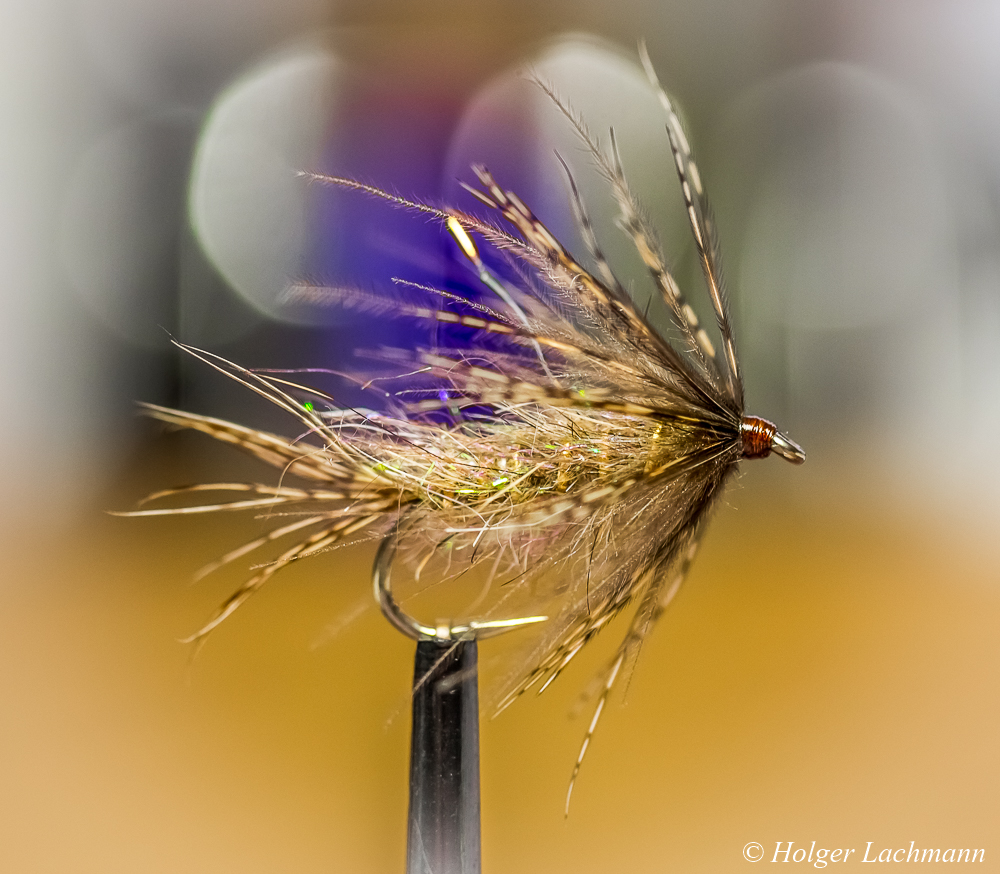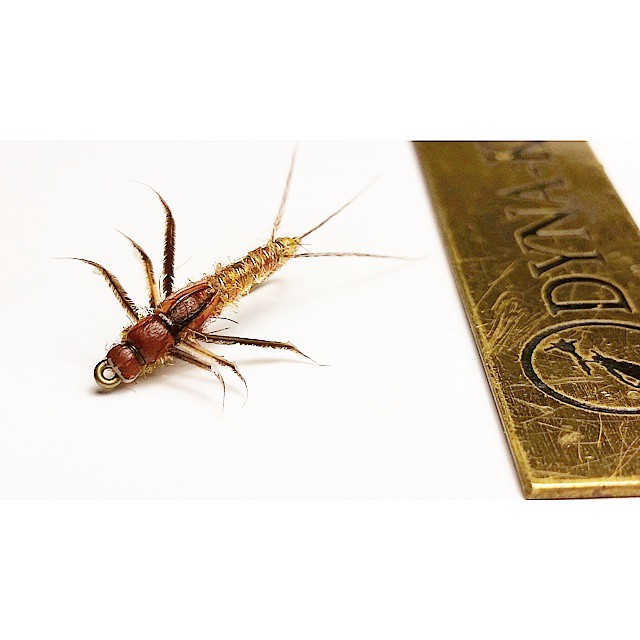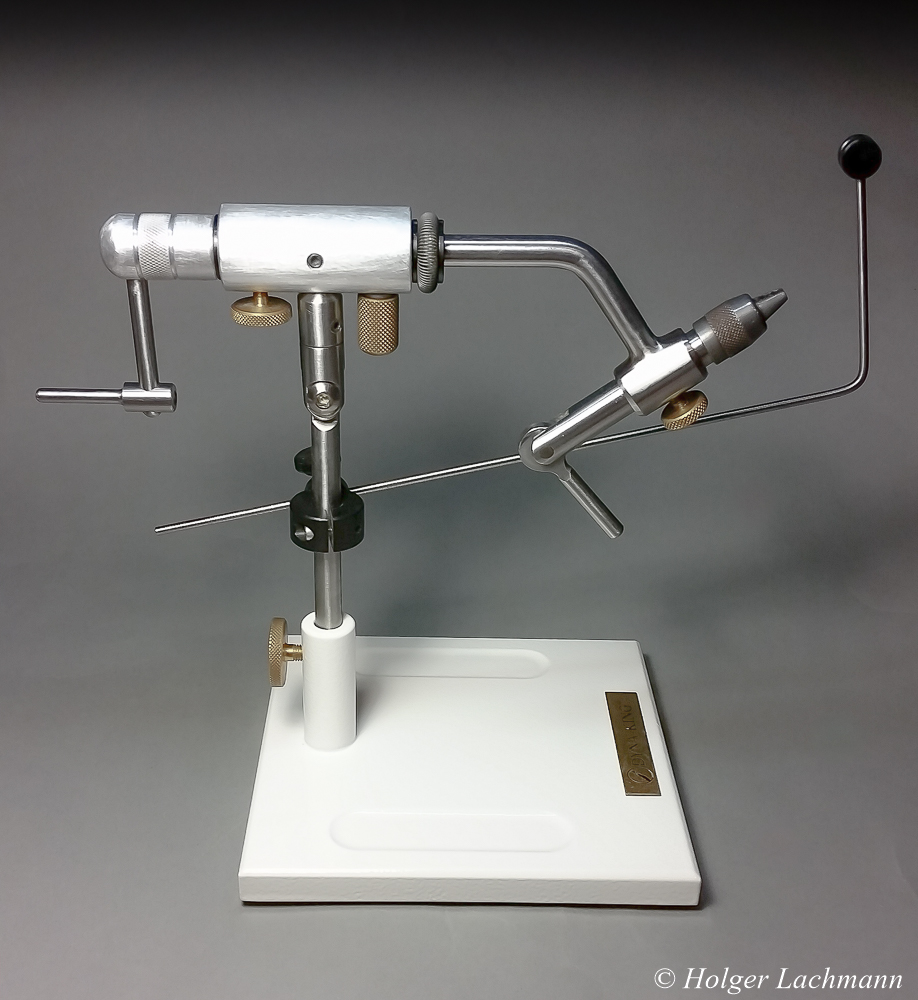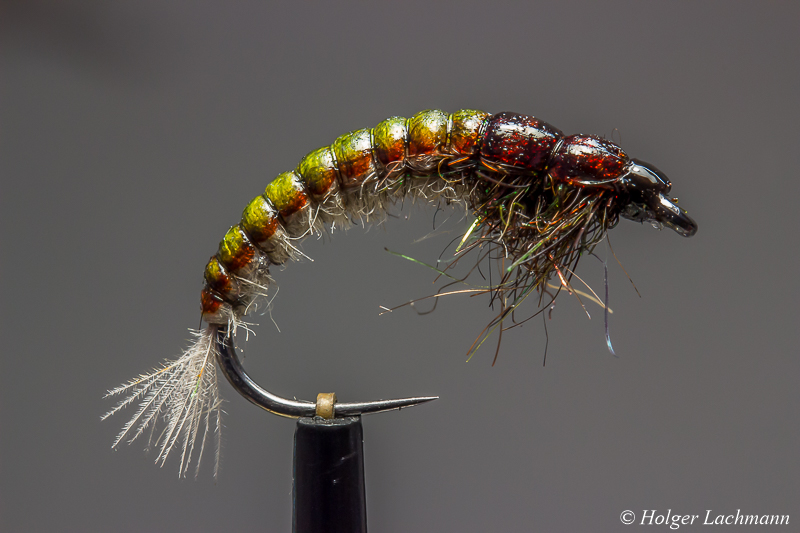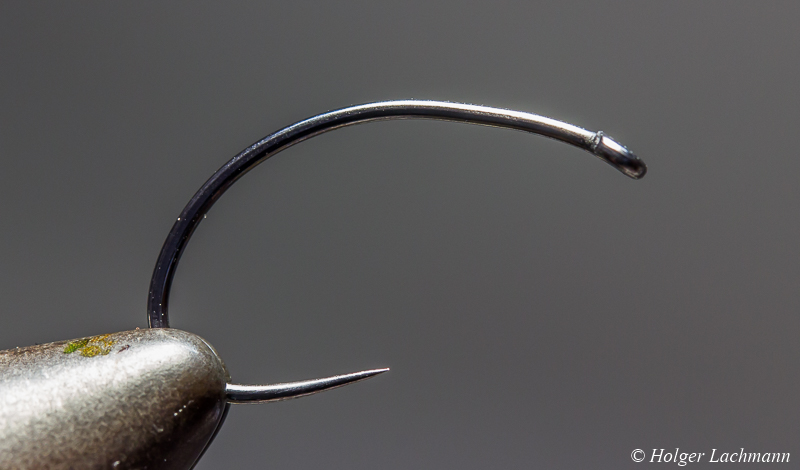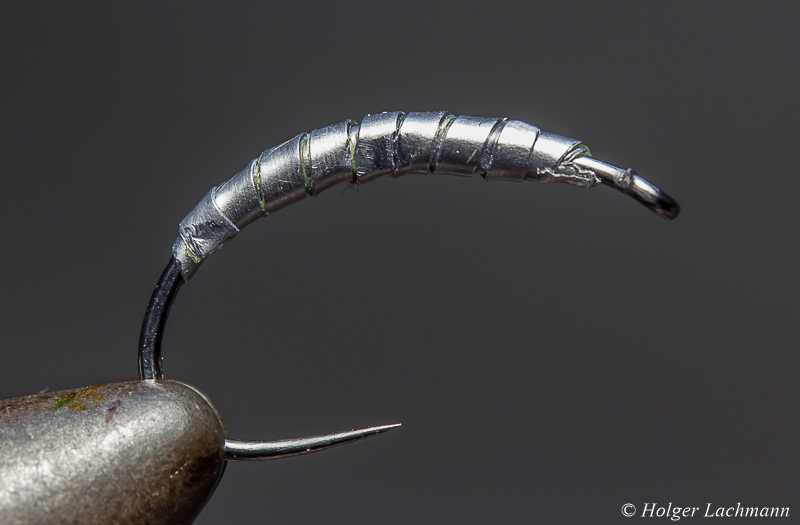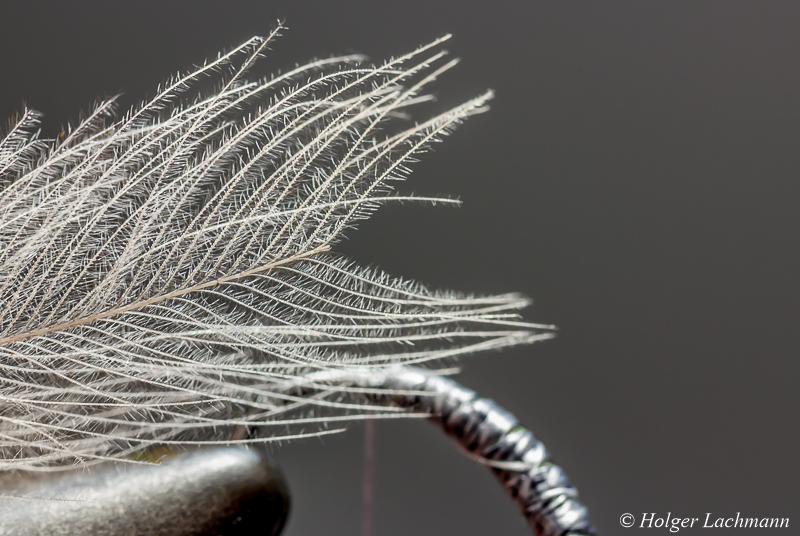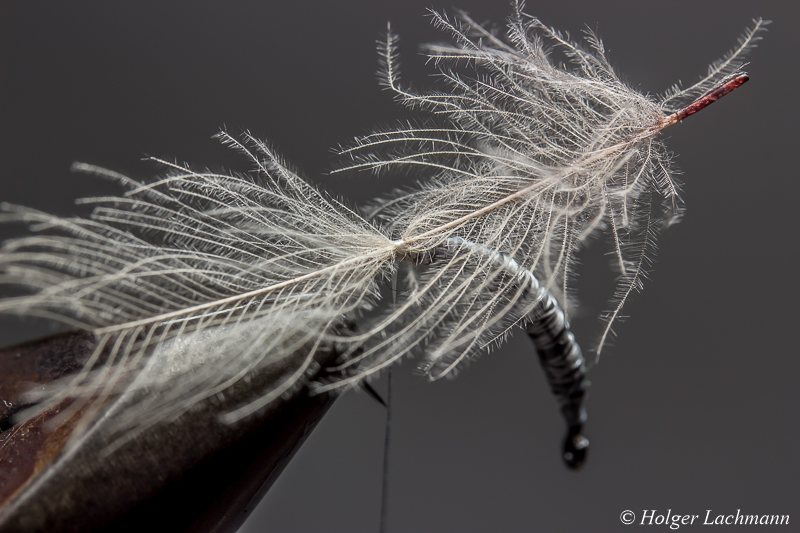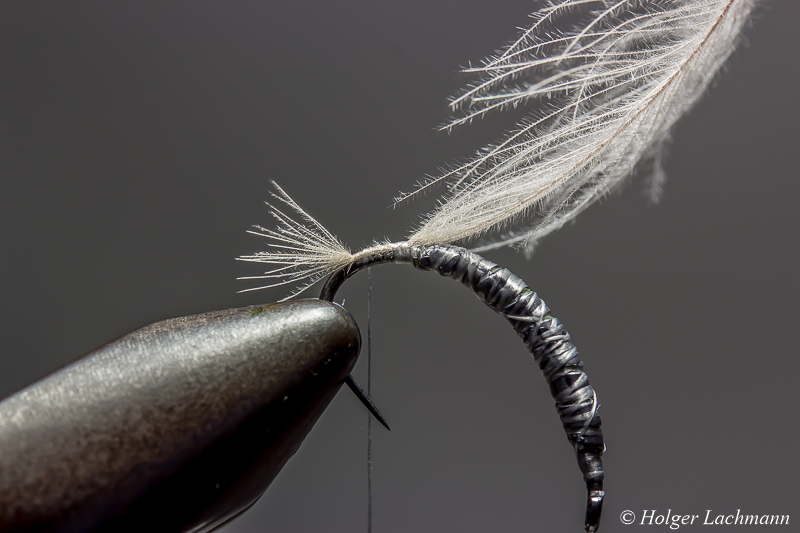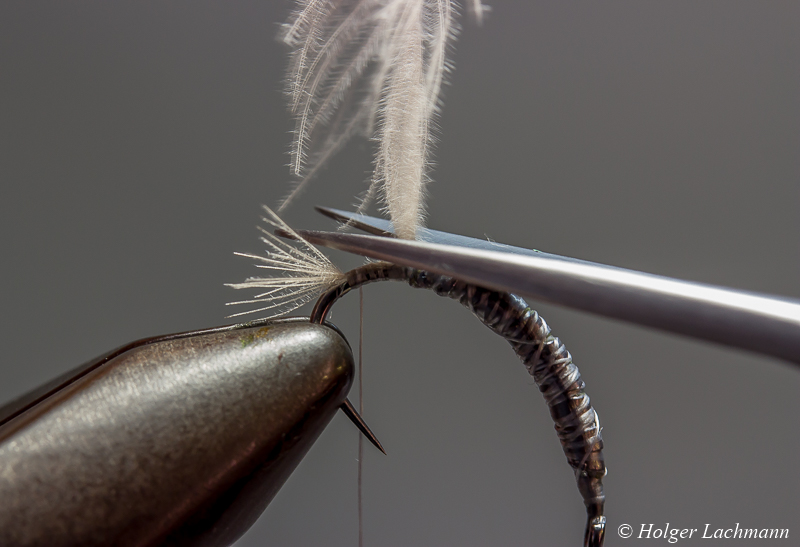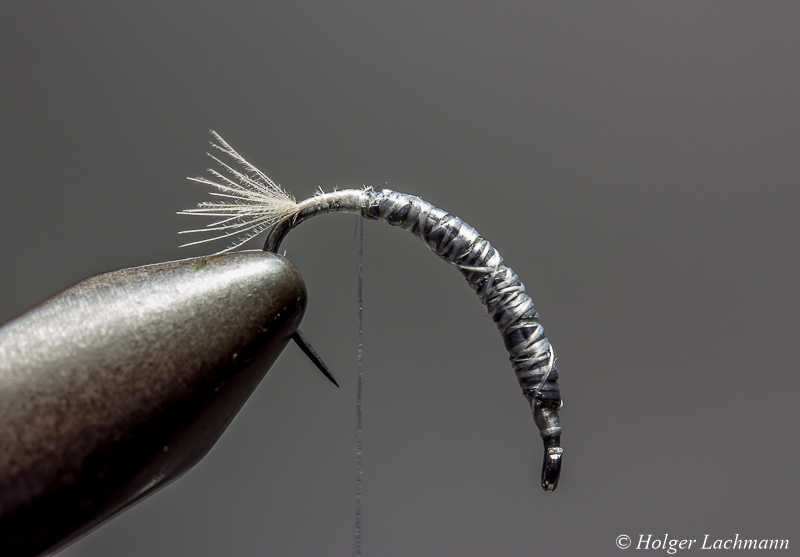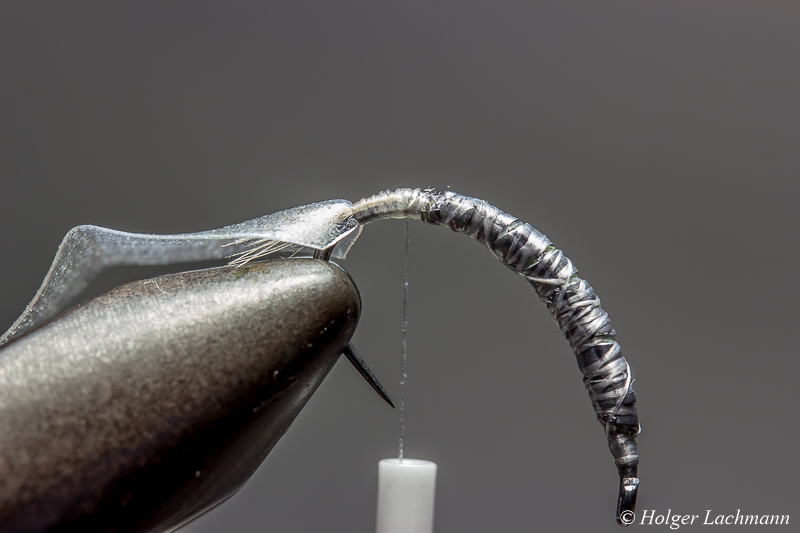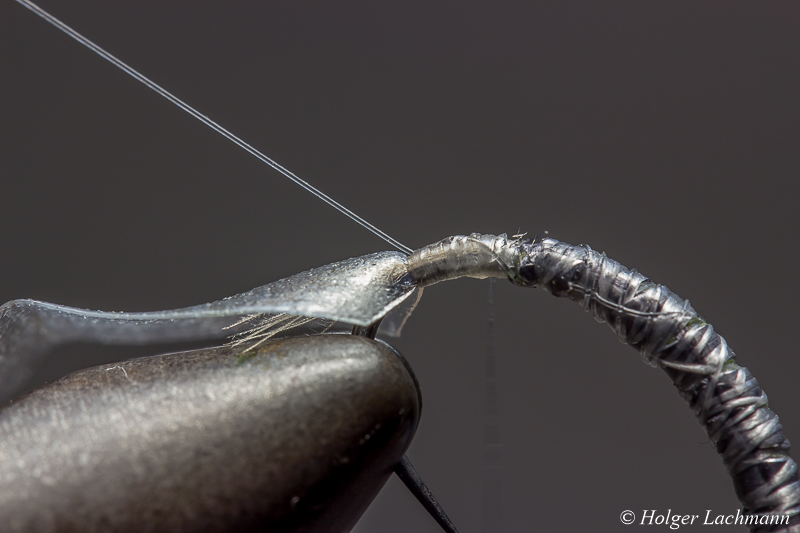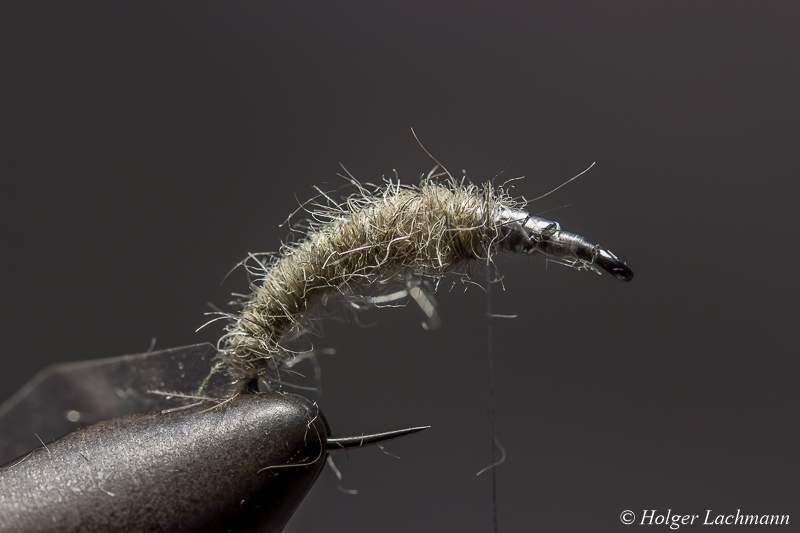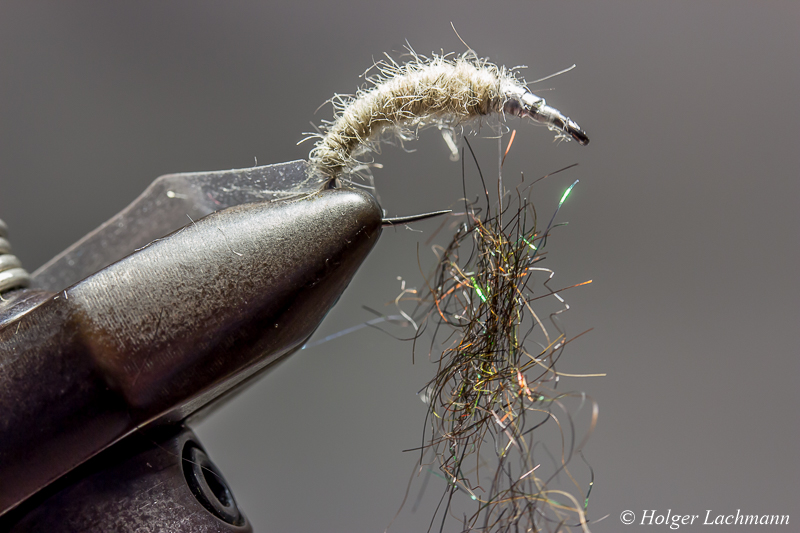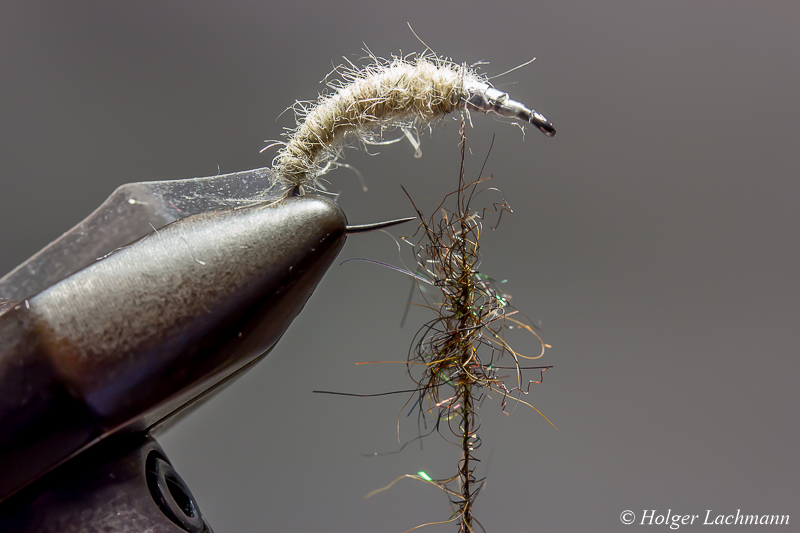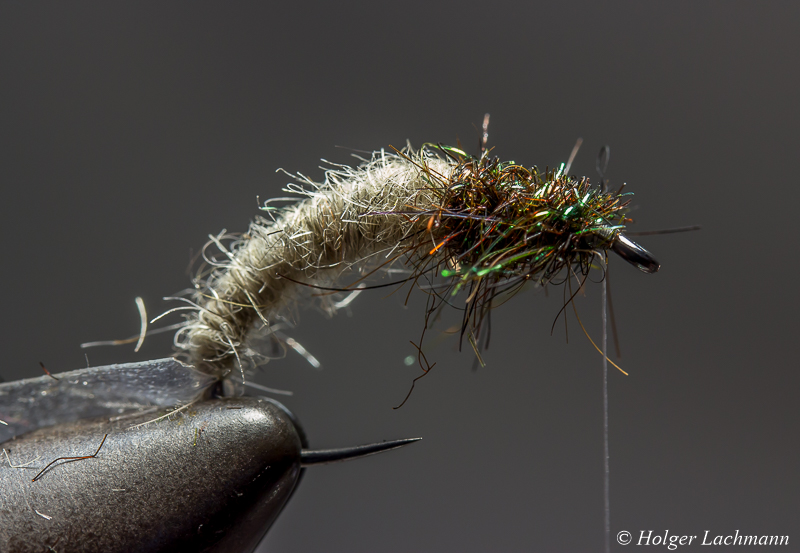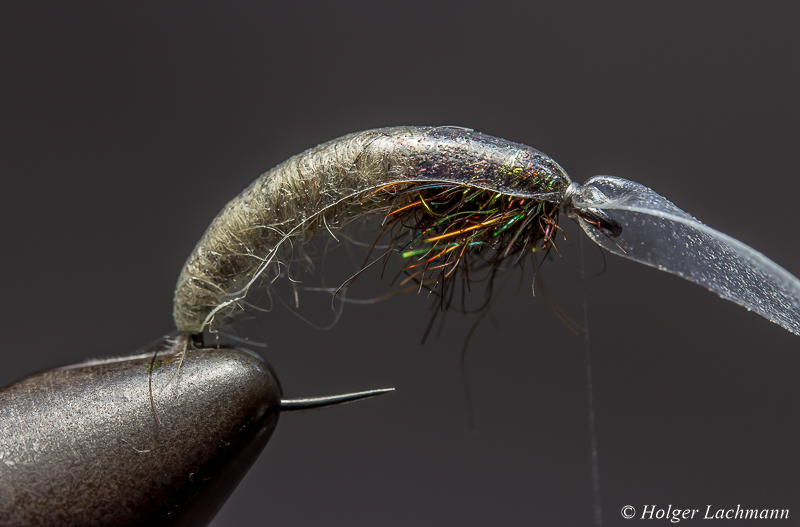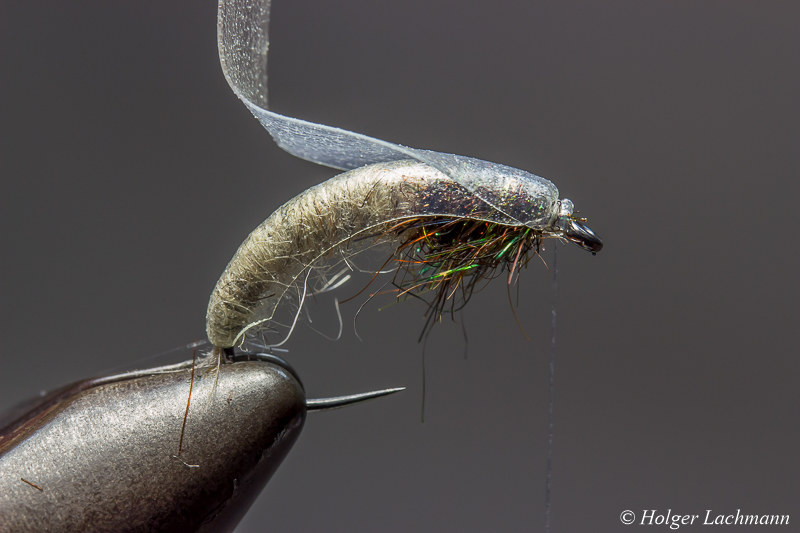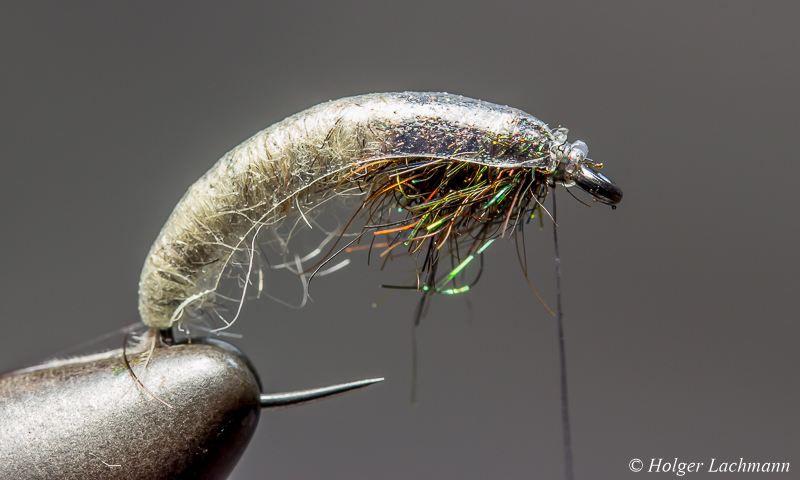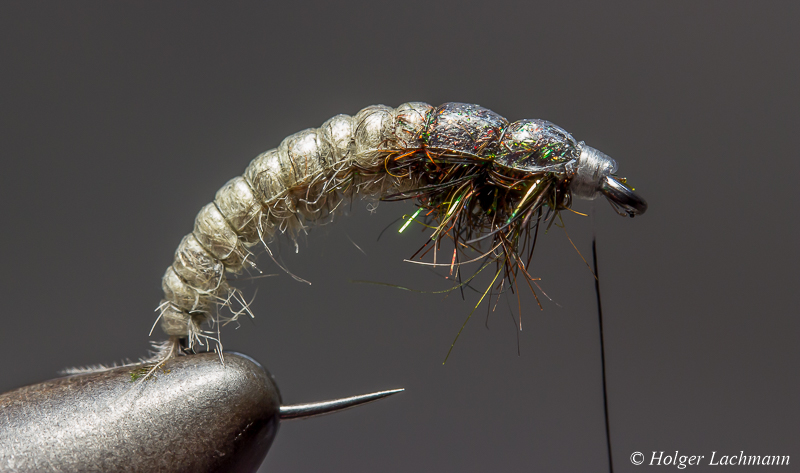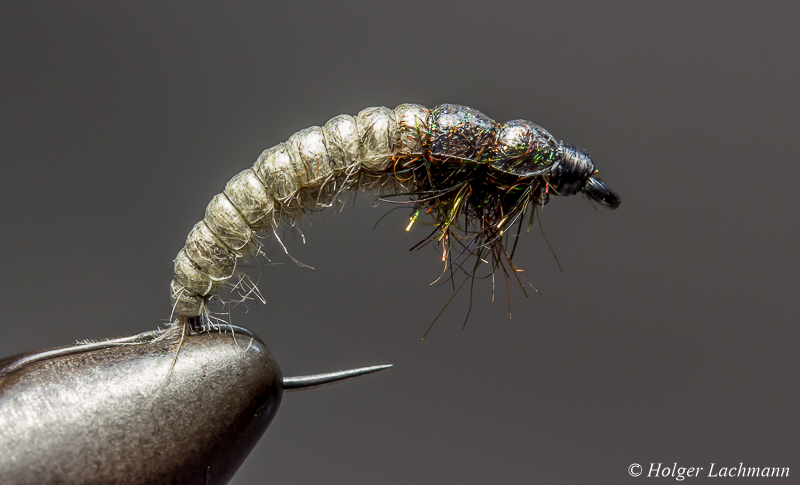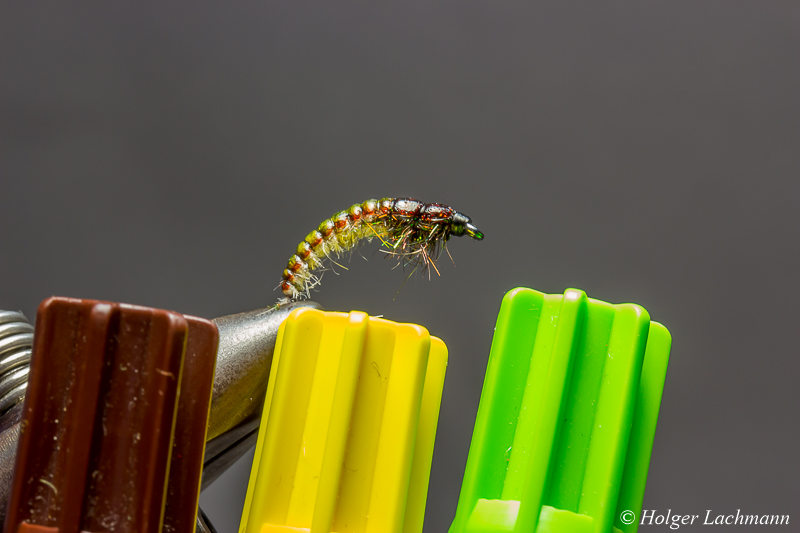- Tungsten Bead
- Hanak # 14
- Coq de Leon
- Fluo Thread
- Polish Quills
- Peacock Dubbing
- Bug Bond UV Resin
Schlagwort-Archive: The One Fly
How to tie in Bead Chain Eyes and Dumbbell Eyes ROCK-SOLID!
I was often asked, how bead chain eyes or dumbbel eyes should be tied in, so they won’t twist around the hook shank or getting loose. It seems like a simple task to tie them in, but there are some mistakes you can avoid to get a better result.
I didn’t wanted to do a „how to…“ about it, but I saw a good tying video about a nice streamer pattern yesterday. The fly tyer in the video did the same common mistakes like so many others. He used super glue to fix the eyes, but only at the end on the turns as a kind of topping, and as a topping, super glue can’t show it’s real strength.
So, I made some pictures and I will show you how to tie the eyes in – the ROCK-SOLID-WAY !
If you use G.S.P. thread, you should rotate your bobbin to twist the thread. Otherwise the G.S.P. is too slippery to create a good solid basement for the eyes.
BEAD CHAIN EYES
Ok, let’s start with the bead chain eyes: First, brush some super glue onto the hook shank. I like to use super glue gel.
Twist the tying thread and do a nice layer of thread as a basement. Some glue will be pushed out between the windings of the thread. Don’t whip the glue away.
Go with thread in open windings from the back to the front and then to the back again. Then, wind the thread to the position, where you want to tie in the eyes. You can see, why you shouldn’t wipe off the super glue from the first tying step. You should tie with maximun thread-tension ALL THE TIME!
Tie in the bead chain eyes with only 2-3 turns of thread, not more!
Now comes the „trick“: Brush some super glue on your tying thread like shown on the pictures.
Wind the thread with the super glue in figure-8-turns around the eyes and the shank, like you normally do. Make sure, that the glue is everywhere. That’s the most important thing. The glue is not only on the top of the windings, it secures every single turn of thread and so it creates a perfect connection between hook shank, bead eyes and thread.
View on the underside of the eyes. You can see how the glue is pushed from one turn of thread to the next to create rock-solid bead eyes which won’t move, twist or slip no matter what you are doing to them during fishing. If you did it right, you will need pliers to twist them. The only way to connect them even more solid to the hook is to weld them onto the hook shank….! ;-)
Dumbbell Eyes
When you like to use dumbbell eyes, you may need a larger basement to secure them. 
Tie the thread on the hook shank in the same way, like shown before with the bead chain eyes. Then take some dubbing (no matter what kind of dubbing, but synthetic works best), make a first turn.
Twist the dubbing around the thread to create a little dupping rope and wind it around the hook shank.
Put some super glue on the thread and do some open turns with your glue-thread back and forth over the dubbing with HIGH THREAD TENSION! Now, you got a larger solid basement for the dumbbell eyes.
The next steps are the same like with the bead chain eyes. Attach the dumbbell eyes with 2-3 turns on the hook, put some super glue on the thread and wind it figure-8-like around the dumbbell eyes.
That’s it! The dumbbell eyes will stay there forever! Now throw them to the toothy beasts ! :-D
Fishing For Chub At Noon
I didn’t got a lot of time today, but I was able to drive at noon for an hour to the river to look for the chubs. On the 5th or 6th cast, I hooked a really nice fish. It fought very hard, like it was on steroids… I was sure, that the chub ruined the pool, but after some minutes I caught some more fish. A really nice short trip. The nymph I’ve used was tied 20 minutes befor I went to the river. ;-)
A perfect big chub in top condition! Flawless! It doesn’t have to be trout or grayling all the time. Sometimes, the big chubs are harder to catch than trouts!
Jigkowskis
Fly Tier’s Little Helper – Part 4 – Dubbing Needle Deluxe
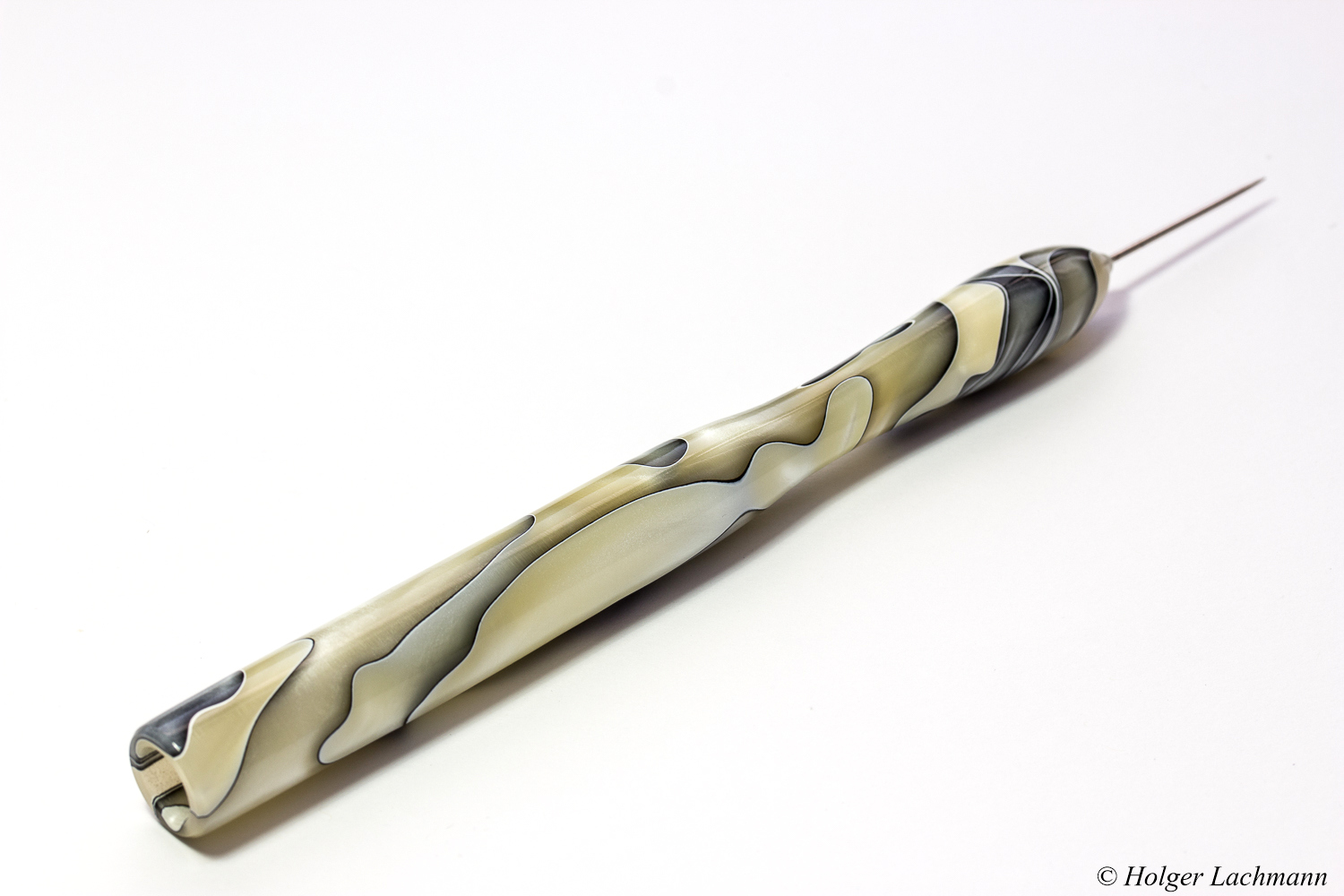 Every fly tier needs a dubbing needle. There’s a wide range of uses, like picking out dubbing, to apply varnish, uv resin, epoxy, for splitting materials…
Every fly tier needs a dubbing needle. There’s a wide range of uses, like picking out dubbing, to apply varnish, uv resin, epoxy, for splitting materials…
You can use cheap ones for just some cents, they’ll maybe work. You can make one by yourself, or you got an awesome friend like master tier André Miegies from the Netherlands. :-)
André is a very good craftsman and he made me this awesome dubbing needle. It’s not just a dubbing needle, it’s also a bucktail reverse tool. At the end is a recess, so you can use the dubbing needle to push back bucktail when you tie Hollow Flies, Pike Tubes or big Streamer. Works awesome!
The dubbing needle looks in reality even better, than on the pictures! The brighter parts are shimmering like mother or pearl. So nice! I really love it and I will use it for many, many years!
If you also want such a beautiful dubbing needle, you can ask André to make one for you, too. The possibilities of color and shape are almost endless.
Just visit his homepage www.andremiegies.nl
Or write him an e-mail andremiegies@gmail.com or visit his Facebook page https://www.facebook.com/andre.miegies
Thanks a lot André! I really appreciate your skills! The next beer is on me! :-)
Cased Caddis 2.0
Cased Caddis
I didn’t tie a cased caddis since a looooooooooong time, but the nice flies of my buddy Thomas inspired me to think about a new pattern. To be honest, this is a mean fly because of the two tungsten beads. It sinks really fast. The case is secured with Bug Bond Lite, so it’s super durable and hard as the original. I will tie some more with less weight and different weight balances…
Fuzzy Emerger
Tied on a Tiemco 212y #15, the nice segmented body made out of Stretch Flex is hanging in the surface. The dubbing, a mix of Hare’s Ear and Peacock Dubbing is imitating the legs and the CDC and Deer Hair makes this emerger float quite well. Just don’t put floatant on the body.
Good during mayfly hatches and works on a caddis hatch, too.
Dry Flies
Captain FuzzyBug’s ready for a new mission
Is it a wetfly? Is it a nymph? Is it a flymph? – It’s CAPTAIN FUZZYBUG!
Sometimes trout like flies, which are presented actively. That happend to me the last time at the river. Dead drift was not what they liked. The „Leisenring Lift“ brought fish and wet fly swing with a little bit shaking.
Normal wetflies often fish to high in the water, especially in spring, when the water is still very cold and the fish are not willing to rise. CAPTAIN FUZZYBUG is weighted and swings deeper in the water column.
The mix of partridge, hare’s ear, ice dub, tinsel and CDC gives this fly the fuzziness and the trouts the illusion of something eatable. It’s a „in case of“-fly which produces takes even if the normal patterns won’t work.
It’s also not complicated to tie, so tie 3-4 and put them in your fly box. You’ll never know when you’ll need the help of CAPTAIN FUZZYBUG! ;-)
Martin Rudin’s Leftover Nymph
This is my first try on Martin Rudin’s very nice „Leftover Nymph“. It looks very realistic und is not as complicated to tie, as you may think.
Martin did a nice step by step tutorial on his website. It’s in swedish, but you can see clearly how he ties his fly.
Here is the direct link:
There you will find also other nice patterns! It’s worth to check them out!
Pimp my vise
My old pedestal base of my Dyna King vise looked a little bit shabby after some years of tying. It also didn’t like the black color, because you couldn’t see black hooks on it very good. So I decided to give the pedestal base a new look. I used a very durable varnish, but I think it’s not so durable like the original coating (maybe the original was powder coated….). Future will show if I used the right varnish for this project. The result is better than I thought. The vise looks quite elegant with this white color. A total change of the appearance. Hopefully the new flies will be as elegant as the vise… ;-)
Caddis Larva Step By Step
Here we go again! After moving to a new server, it’s time for a new step by step tutorial. This Caddis Larva is a very nice imitation of the original and it’s still quite easy to tie. So, it’s not a drama, when you lose it on the river bottom.
You have to fish this larva deep, that’s why there is a lot of weight in it. It still got a slim body, so it sinks fast to the ground. You will find Caddis in almost every river and it’s an important part of the fish’s menu.The coloration with the brown line on the abdomen is not a must. I just did it to show you what for possibilities you have with ordinary marker pens. It’s tied on a # 10 hook, which sounds pretty big, but the body length is close to the original, just try to keep a slim, natural looking body. Ok, let’s start!
Materials:
- Hook: Demmon Competition G601 BL Fly Hook # 10
- Weight: Lead-Foil
- Ribbing: Mono 0,10mm
- Back: Stretch Flex Clear
- Abdomen: Sow Scud Dubbing Beige
- Thorax: Siman Peacock Dubbing Brown
- Thread: G.S.P. 50 D
- Coloration: Edding 3000 Marker Pens
Wind the lead foil in multiple layers around the hook.
Take a CDC feather and cut out the feather steam on the top and tie the feather in like shown on the pictures to create the little tail.
Take the stretch flex and tie it in at the back of the fly. Do the same with the mono for ribbing.
Dub the abdomen on 3/4 of the hook shank with a nice tapering.
Split the thread with your dubbing needle, put the peacock dubbing in the gap, rotate your bobbin to spin the dubbing and wind it around the hook to create the thorax and the legs in on step. Leave a little bit space for the head next to the hook eye.
Fold the stretch flex to the front and catch it with your tying thread next to the hook eye. Fold it back, catch it again with your thread and cut away the excess. That’s the easiest way to form a nice head.
Take the mono and ribb the abdomen in small segments and the thorax in two bigger segments. Catch the ribbing with your tying thread and cut it off. Do two whip finish, cut the tying thread and the tying is done.
With the marker pens, you can give the larva the coloration of your liking or the spicific colors of the originals in your home waters. Put a drop of varnish on the head and the fly is finished, ready to be presented to the fish of your dreams! :-)
Tight lines!
Squids for the Baltic Sea
Everyone is talking about Squids in the Baltic Sea right now. Why? You can read it here on Globalflyfisher
It’s a nice and interesting written articel by Martin Joergensen. Martin is from Denmark and he is close to the sources, so why should I write it again? ;-) Thx Martin!
So, I don’t got any squid patterns in my fly box for sea trouts. That’s why I was testing a little bit on my tying place. These are the first two patterns.
First try, unweighted
The second try is weighted in the front and I put the eye on the second part and just the mantle on the main hook.

